Last Friday we had the first genuine thunderstorm we’ve had in a while, as opposed to mere heavy rain, complete with the necessary light and noise, plus heavy rain. Saturday dawned warm and sunny, a glorious spring day, made for going somewhere.
But first I loaded the back of my car with two old computers, two banker boxes of papers and an auto battery long since defunct, and took them to a drive-through recycling event organized in an enormous parking lot next to Boomers Stadium (formerly Flyers Stadium). Didn’t take long to dispose of these things, and it didn’t cost me anything, since I assume the recyclers will make something from the materials they gather.
After that, and packing a few things in the now-empty back of the same car, we drove east for a 30-hour trip to South Bend-Mishawaka, Indiana. We arrived at the campus of the University of Notre Dame mid-afternoon, parked in a large lot near the likes of St. Mary’s Lake and the Knute Rockne Memorial Gym, and made our way to a place I’ve wanted to visit for years: the Basilica of the Sacred Heart, Notre Dame.
That’s as far as we got toward the entrance before being told that an ordination was in progress, and we’d have to come back when it was over, in about 30 minutes.
There’s plenty else in the vicinity. Soon we found ourselves at the university’s Lourdes-class Grotto, downslope from the basilica. We joined a fair-sized crowd at the place.
I think the last time I was there was on a gray, drizzly day in November maybe 20 years ago, making a brief stop on a longer trip whose purpose I forget. That day, there weren’t nearly as many people. Just me, actually.
Then we started wandering down the sculpted lawns of Norte Dame leading away from the basilica, but hadn’t gone far when the basilica bells started tolling. A joyous tolling.
Note that people are spilling out of the basilica, especially those many in white ecclesiastical robes. The ordination had concluded. Later, I picked up the program.
Three men were ordained that day: Drew Clary, Cameron Cortens and Gabriel Griggs. The cross and anchors on the cover are from the seal of the Congregation of Holy Cross, one of whose schools is Notre Dame.
A bishop soon emerged, who presumably would be the ordaining bishop, the Most Rev. Kevin Rhoades. He stood talking to the priests and others for a few minutes.
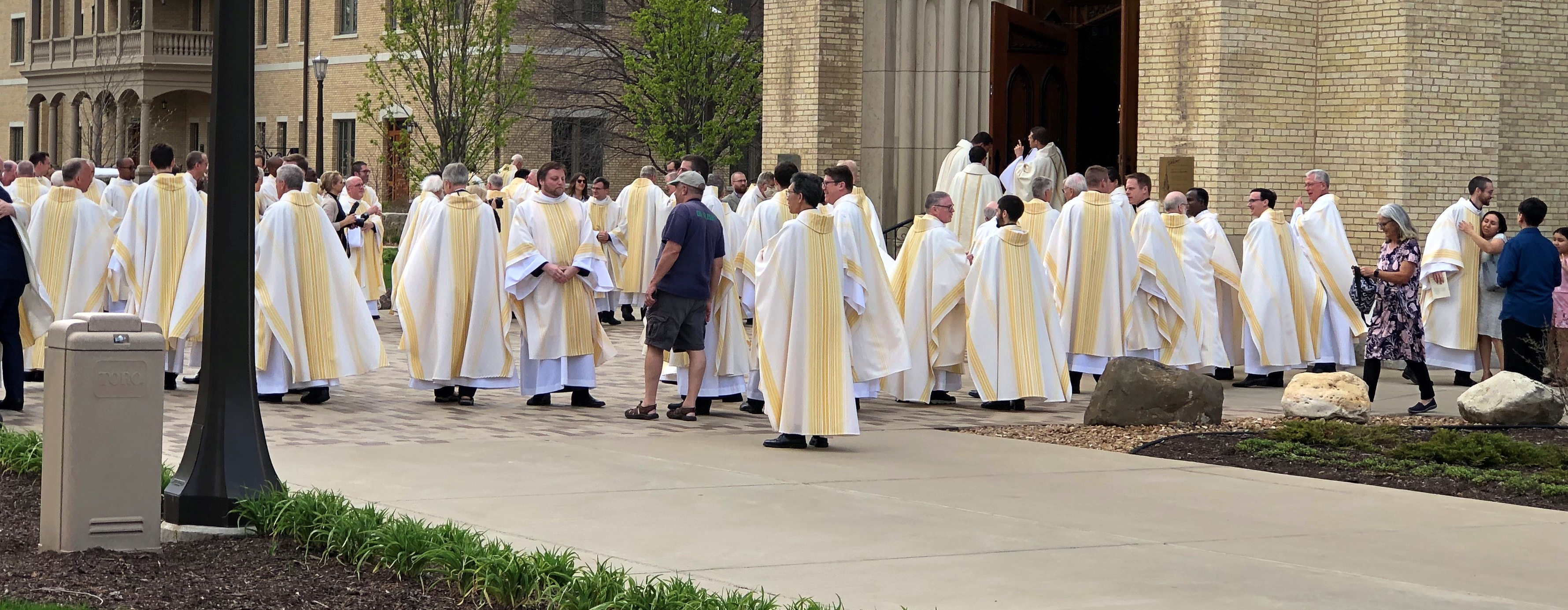
Soon people formally, but more ordinarily dressed, poured out of the church, and socialized outside for a while. Taking turns minding the dog, Yuriko and I took turns looking inside.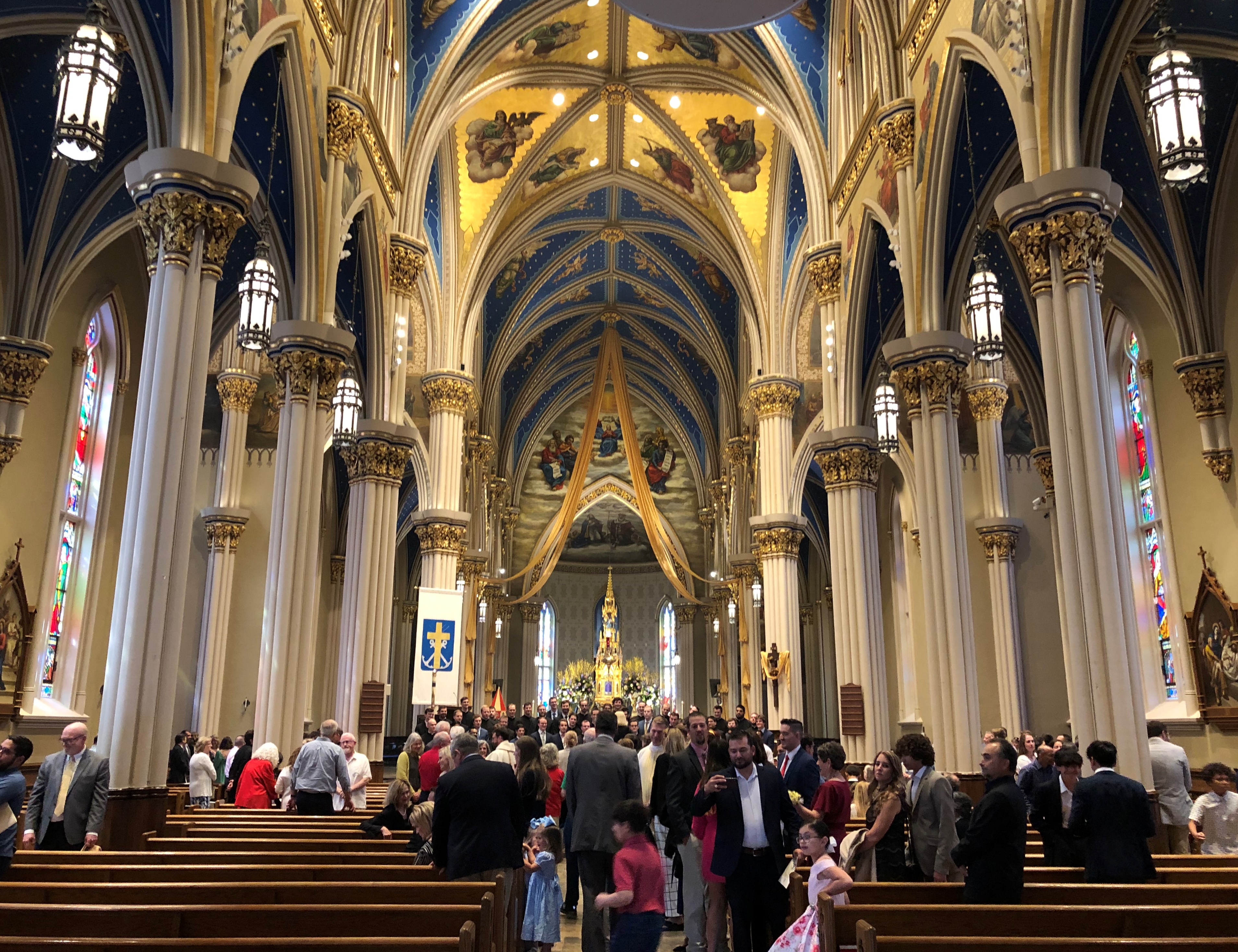
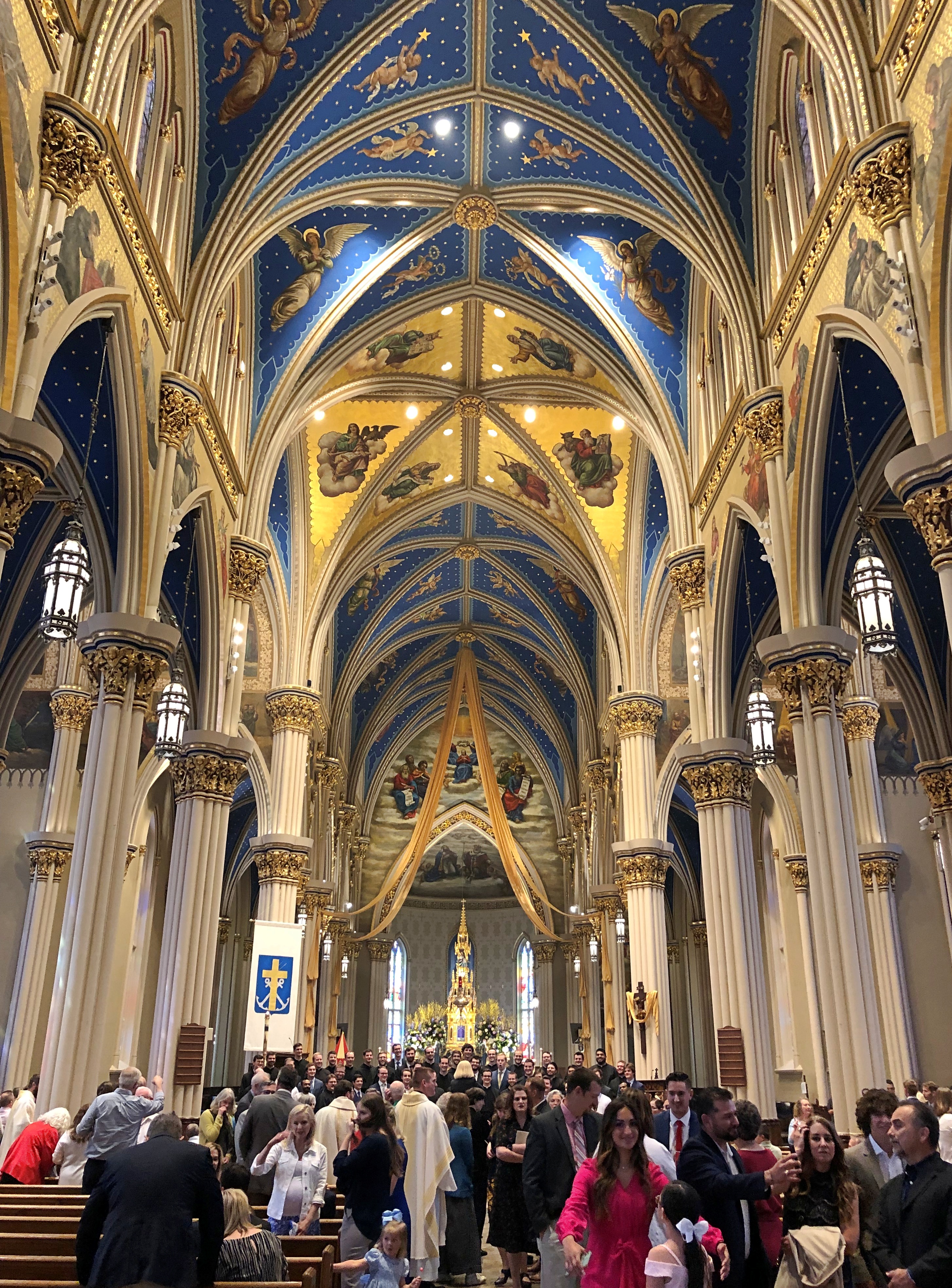
As splendid an interior as I’ve seen anywhere.
“The church’s history dates to the 1830s when missionaries built a log cabin to house a chapel at the site,” Midwest Guest says. “Father Edward Sorin, founder and first president of the University of Notre Dame, built a larger log structure for the Church of the Sacred Heart of Jesus by 1848…
Later in the century, Fr. Sorin tasked renowned church architect Patrick Keely to design him a grand edifice. A little too grand, as it happened.
“Father Sorin apparently experienced sticker shock when Keely submitted a design with an estimated completion price of $100,000 and enlisted his church’s pastor and a religious brother who was an amateur architect and builder to work with Keely to develop a more modest plan.”
Which they did. The Gothic Revival building that stood in front of me, with its bell tower poking the sky, lavish walls outside and in, heaven blue ceiling with gold stars and heavenly beings, was from a more modest plan?


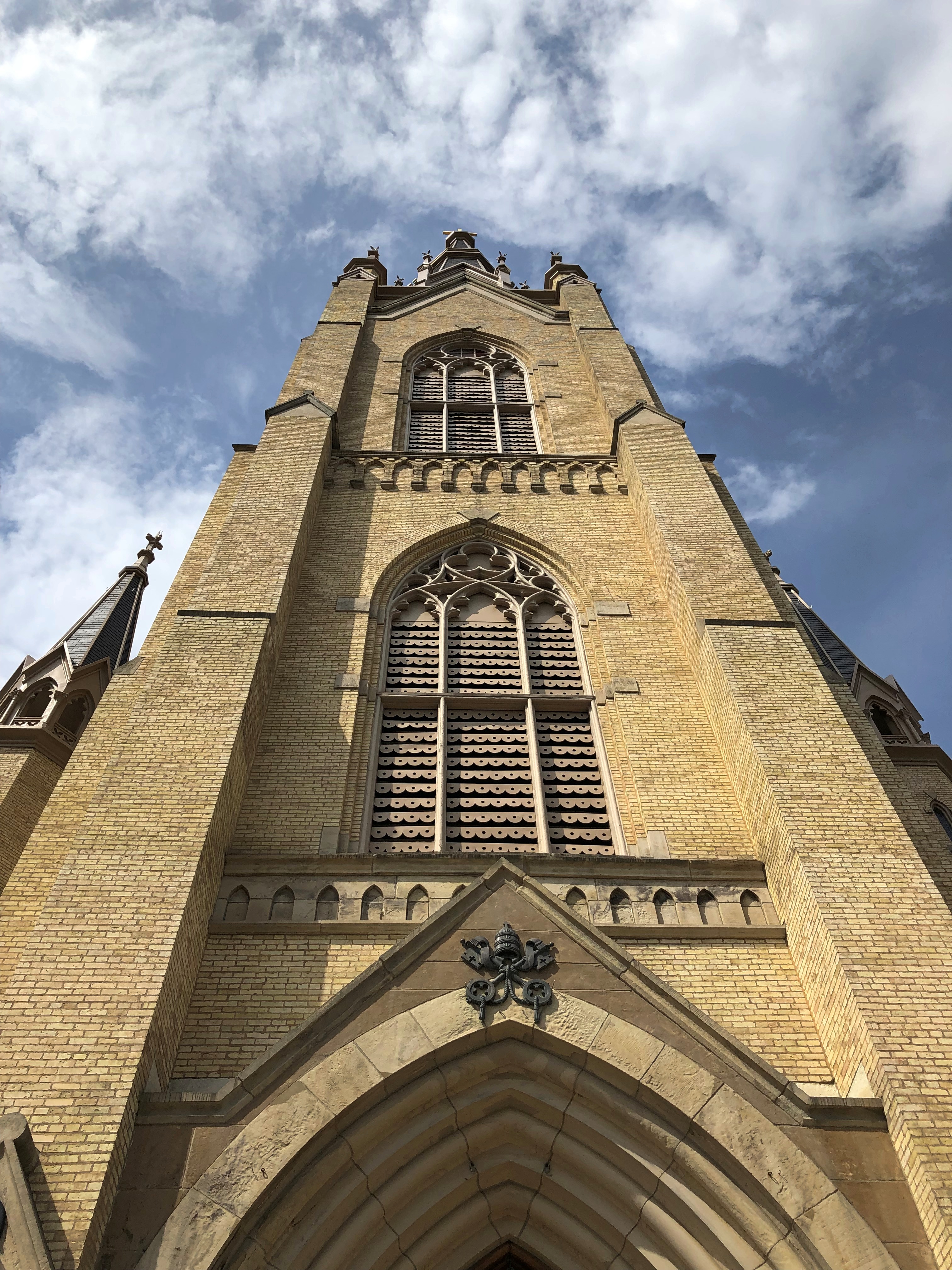
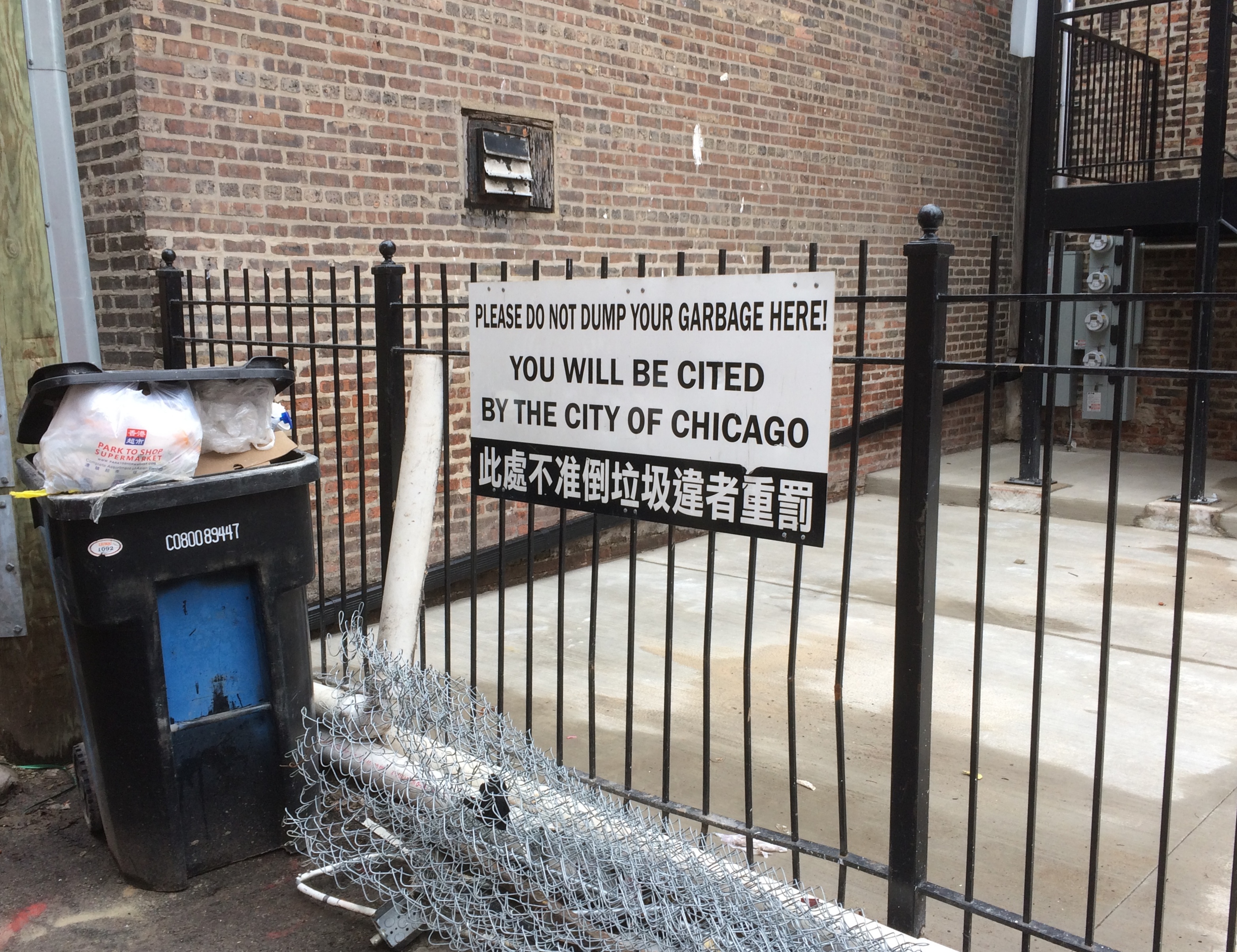
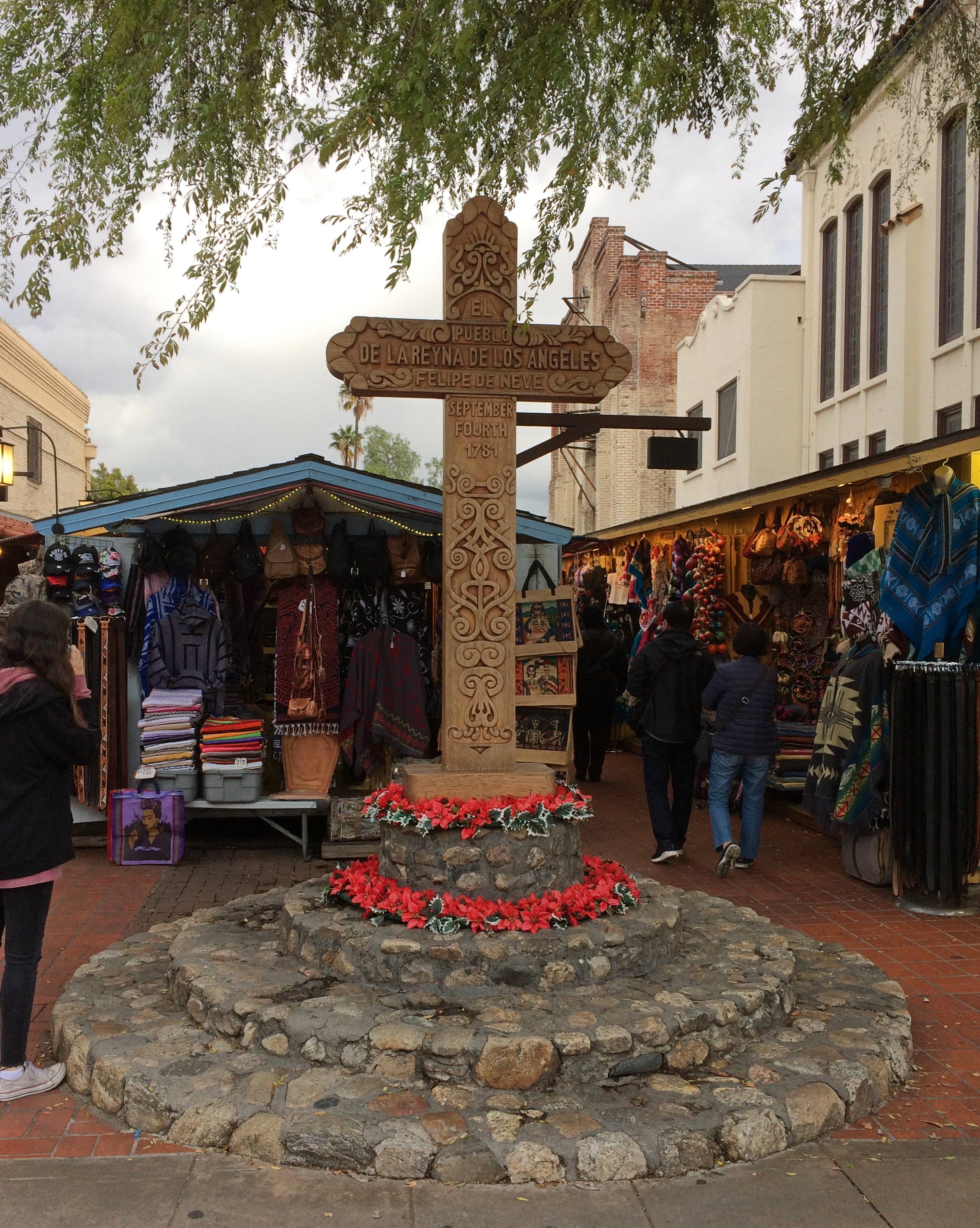
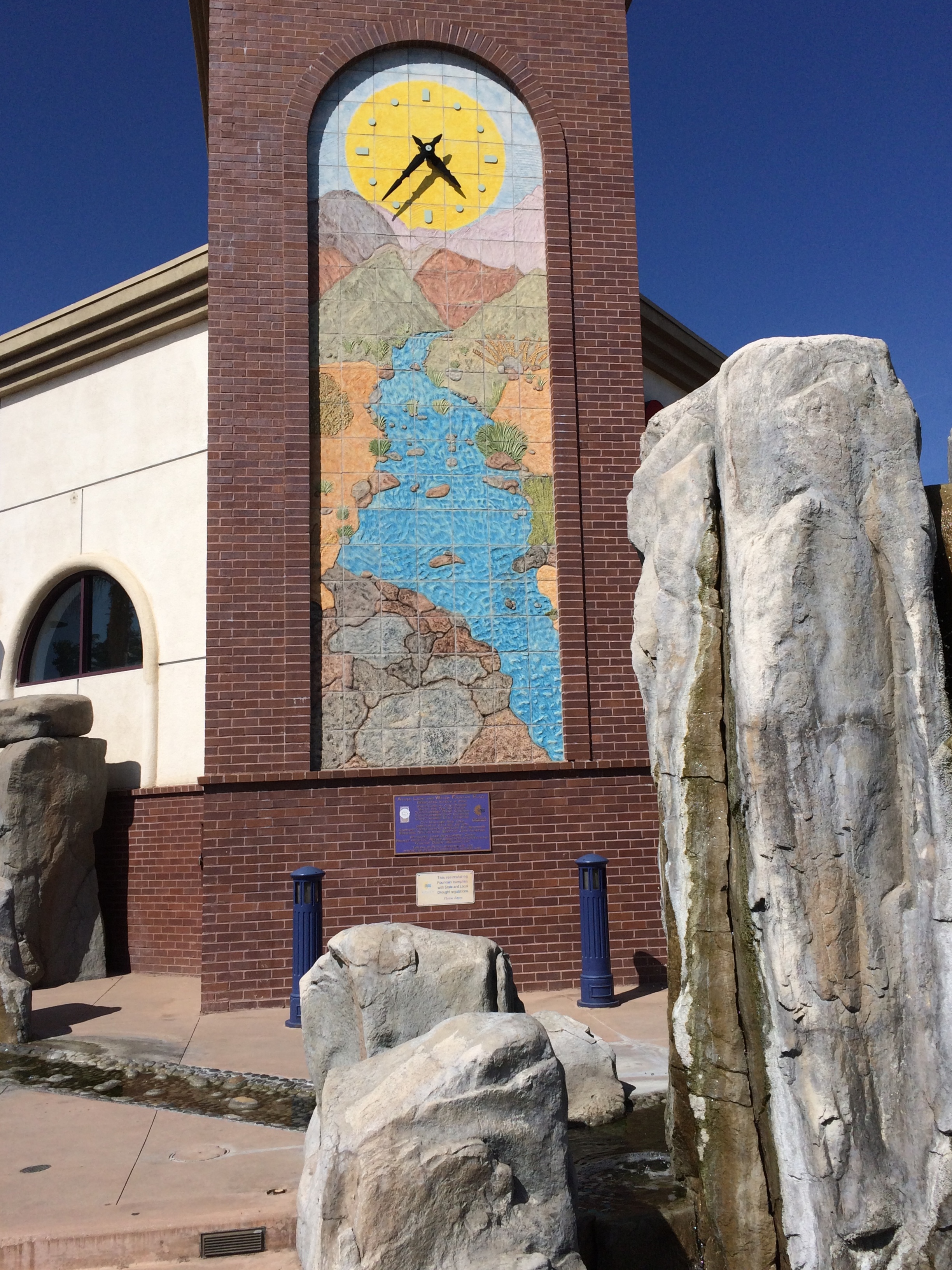

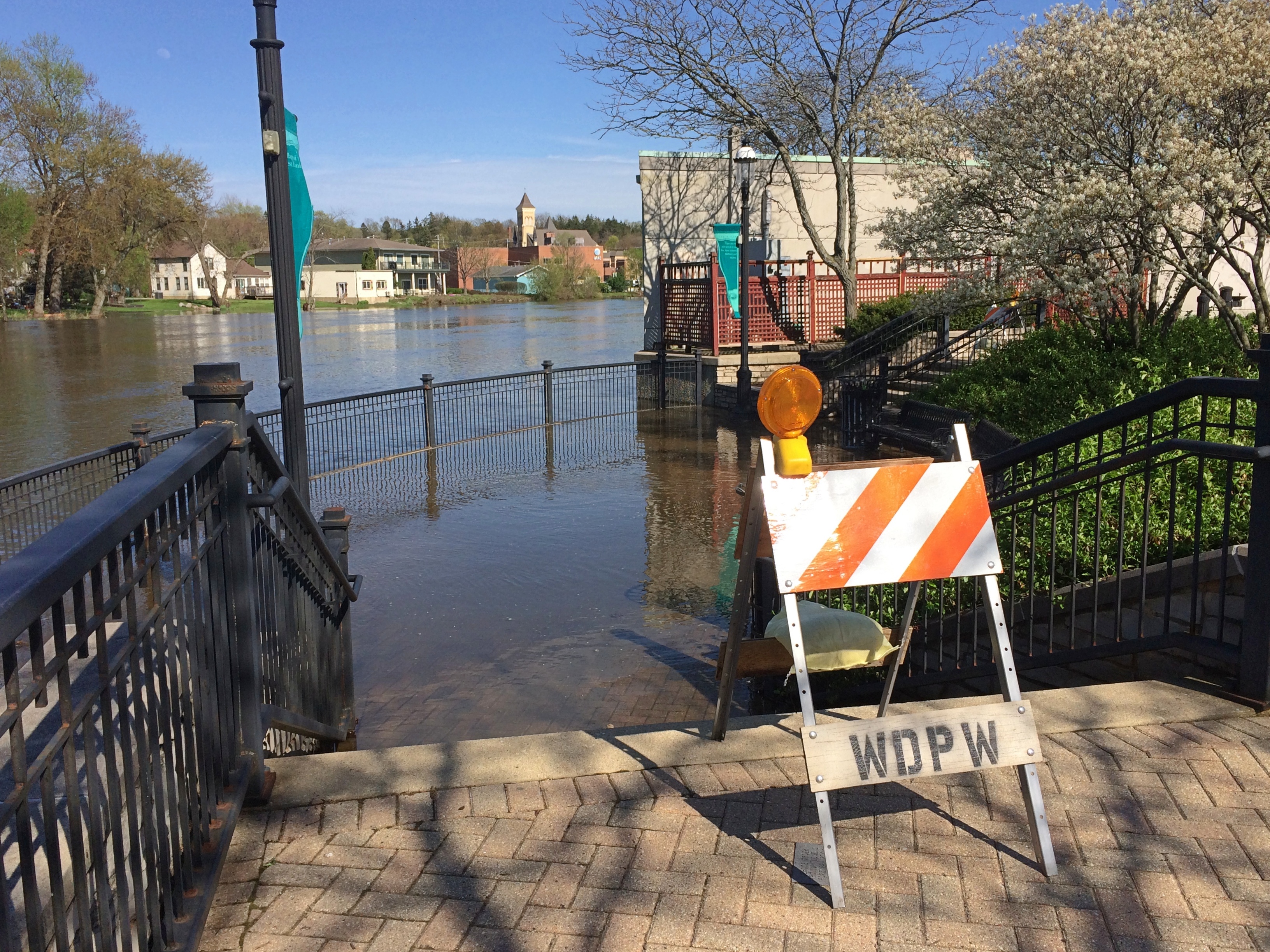
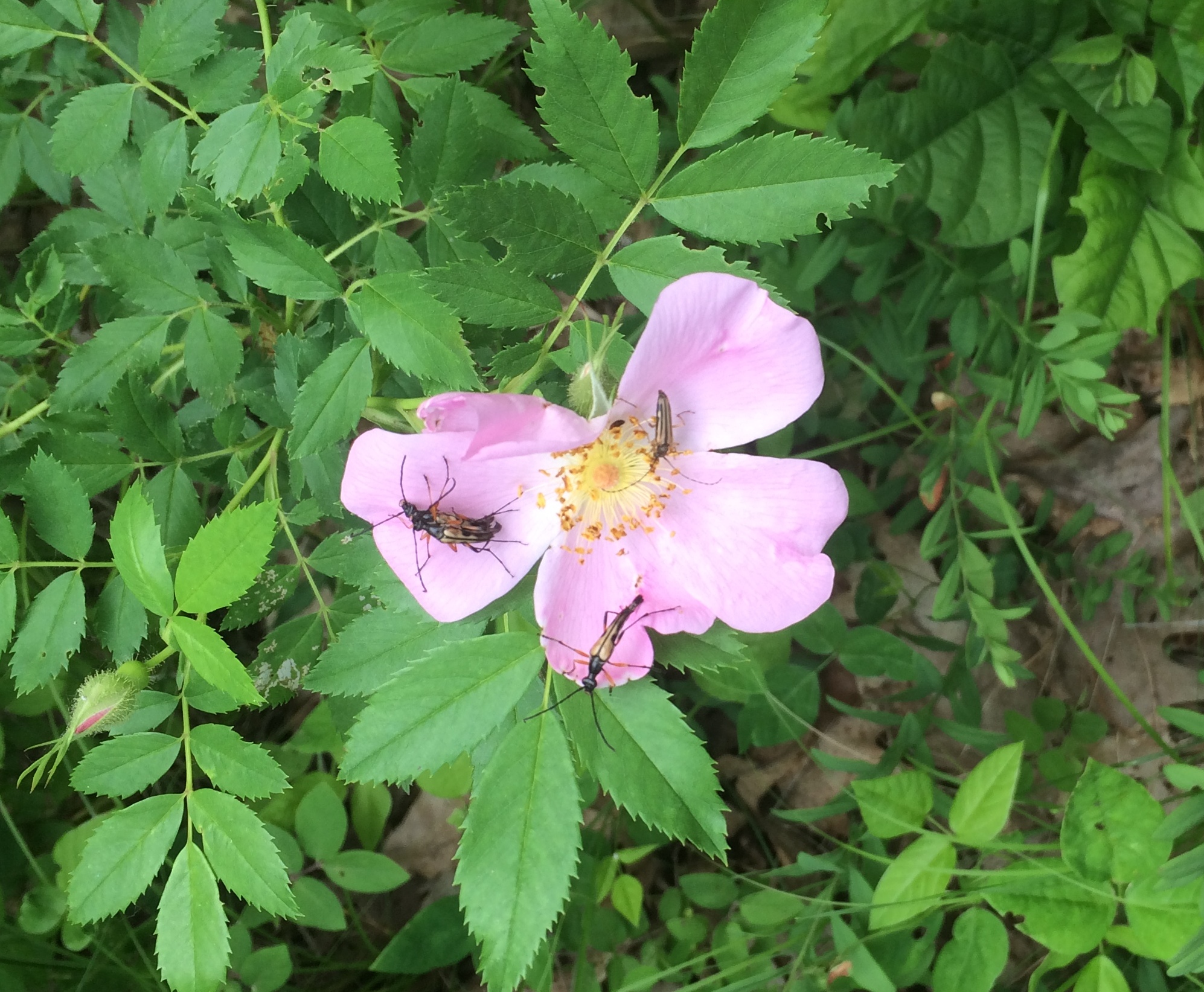
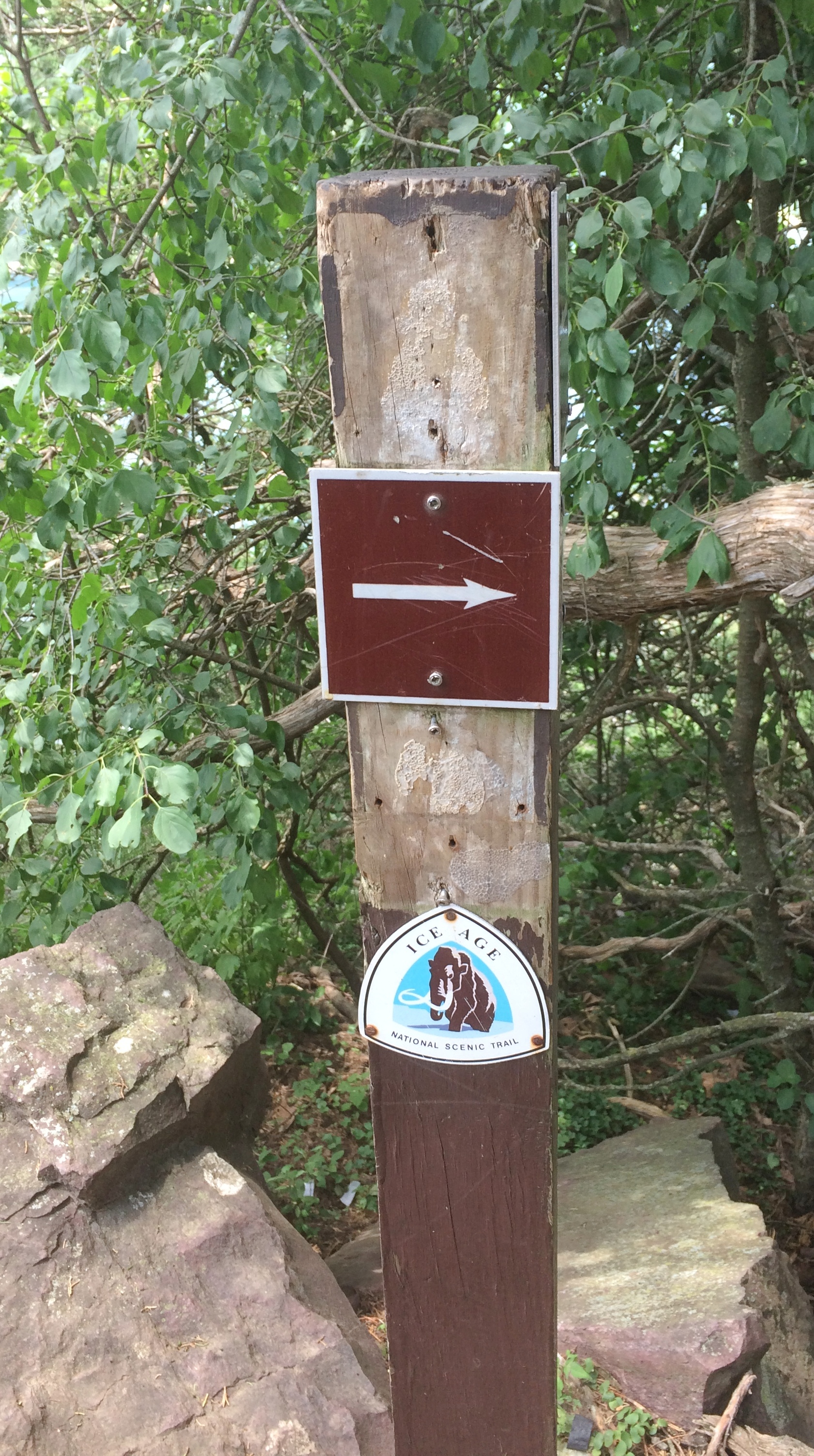 Beverly Shores, Indiana
Beverly Shores, Indiana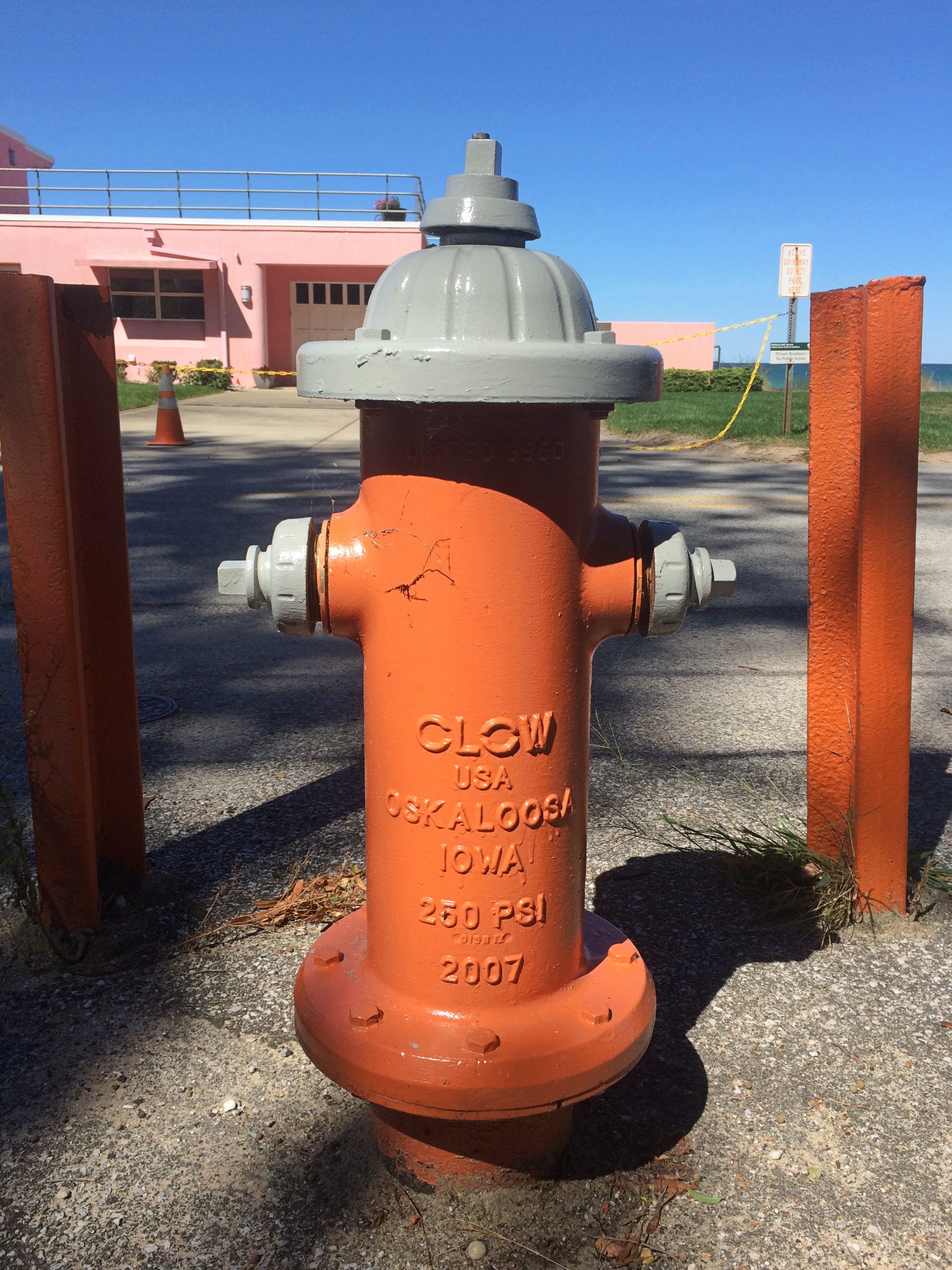
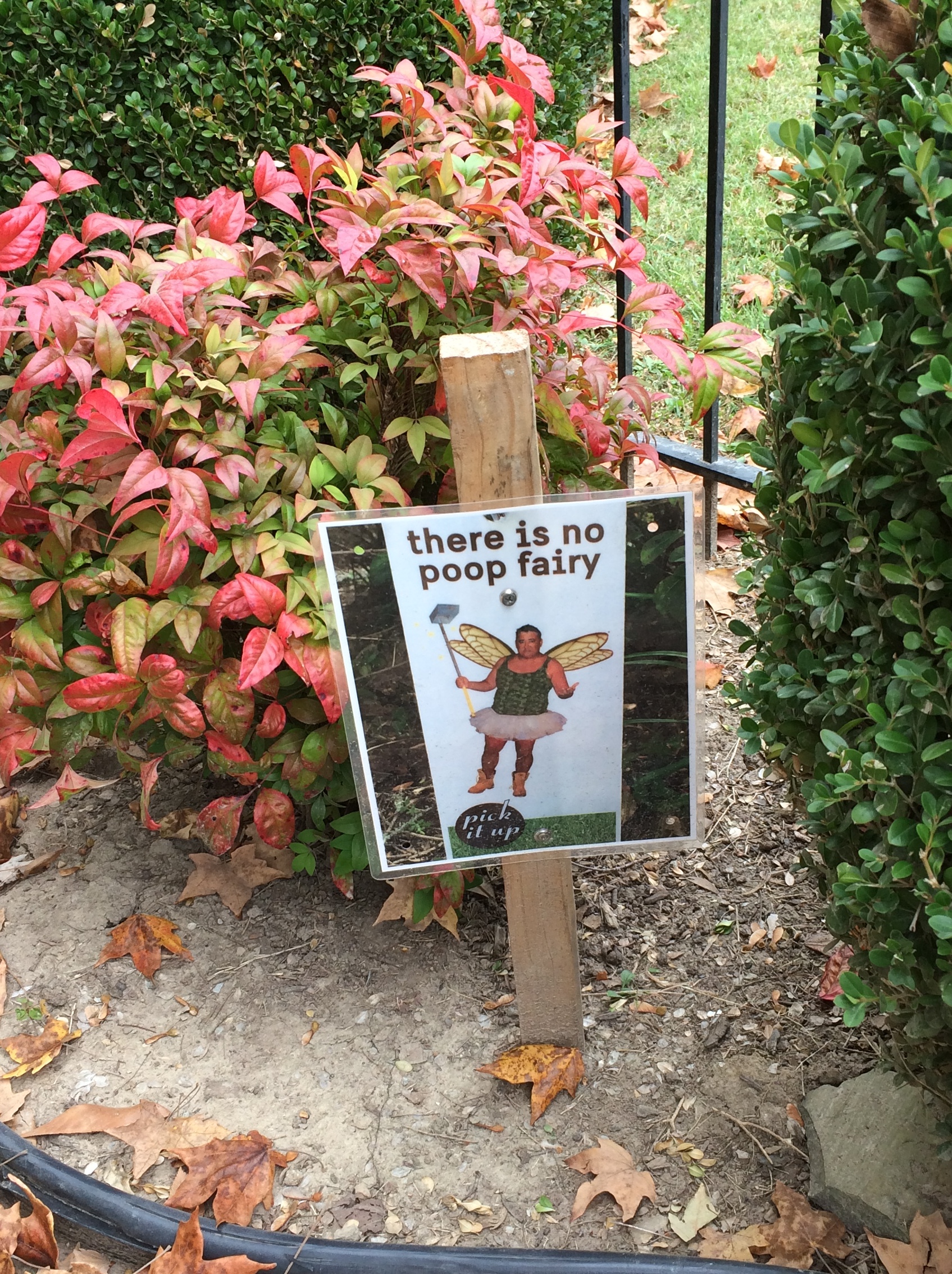 Schaumburg, Illinois
Schaumburg, Illinois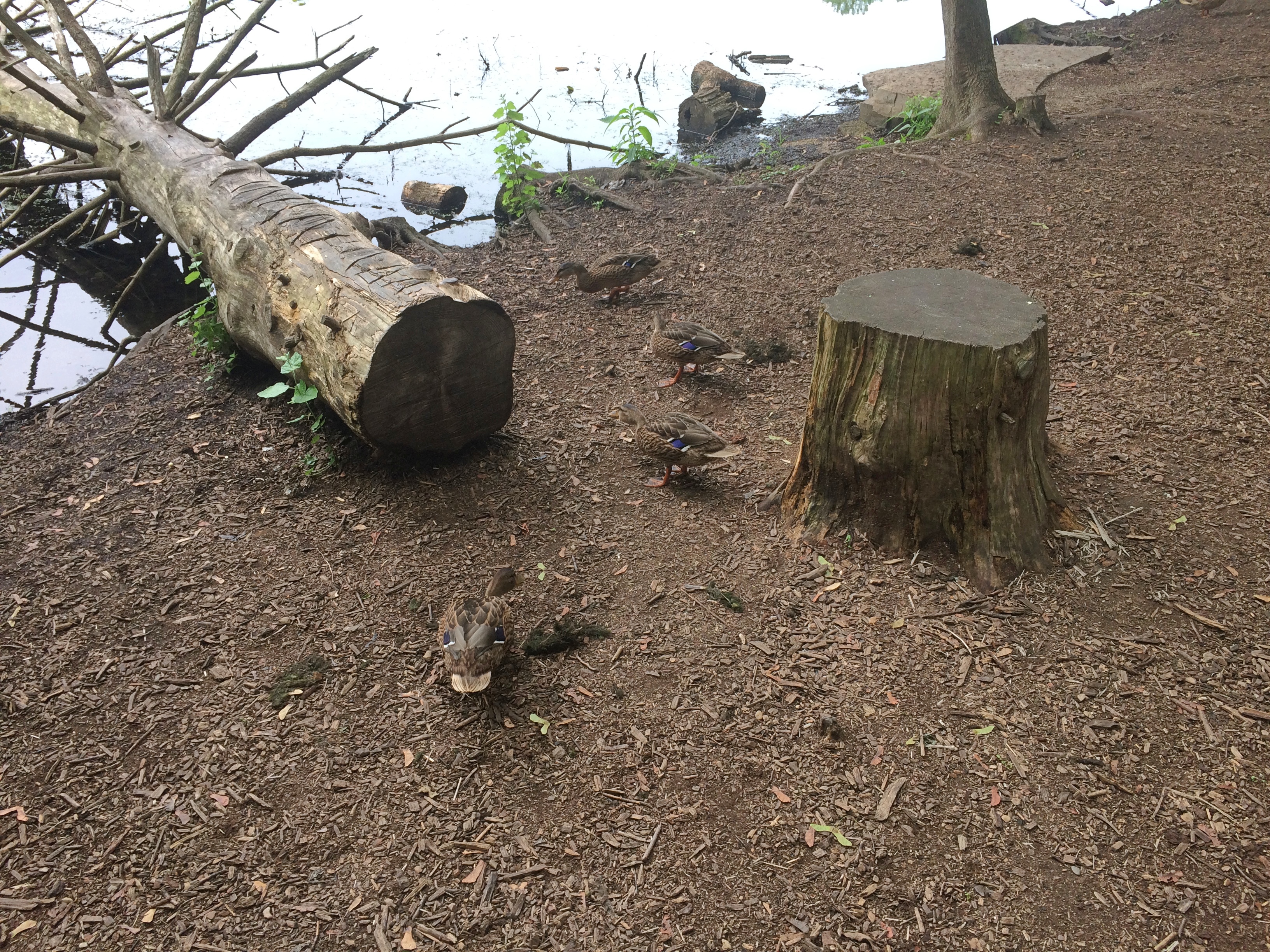
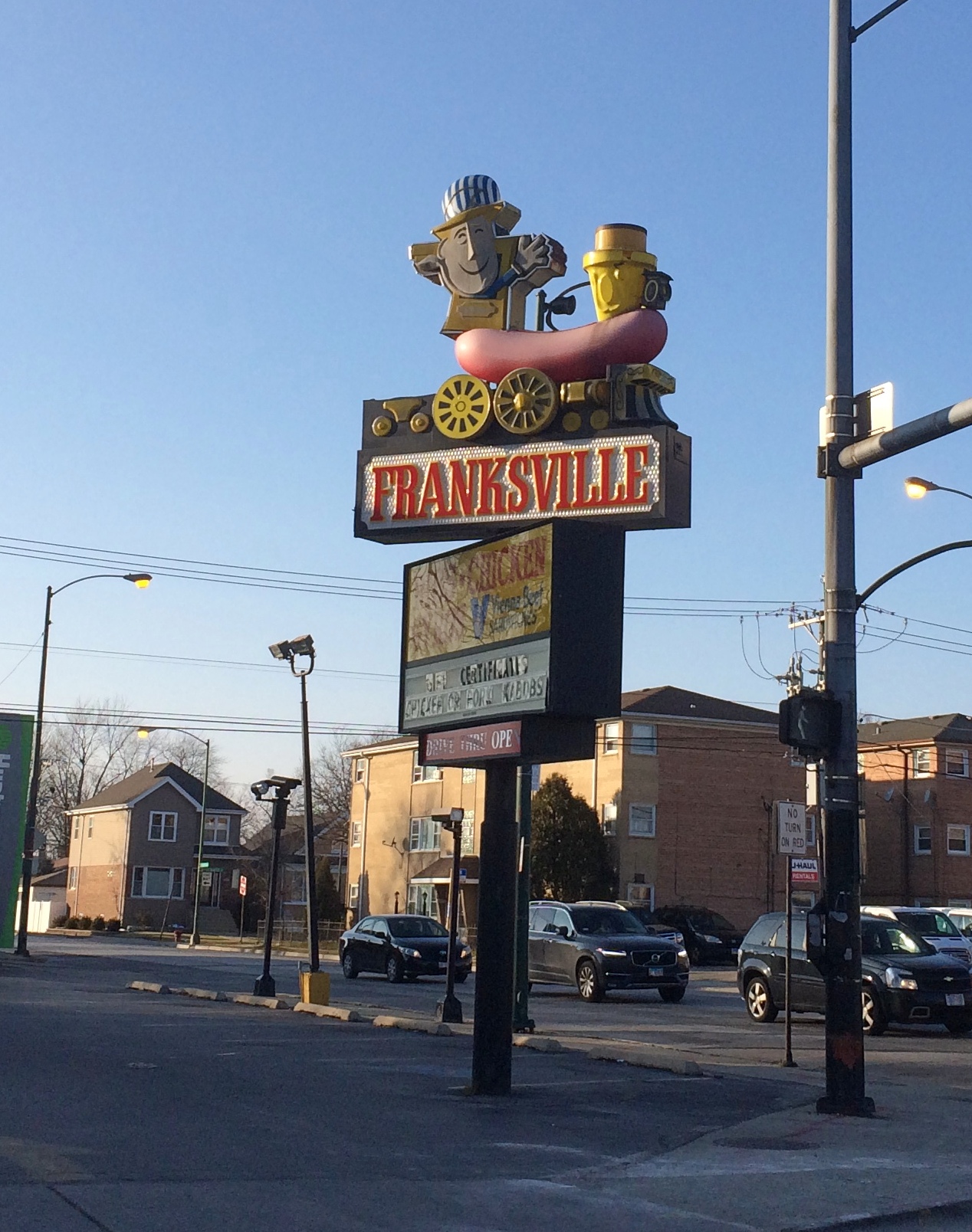



































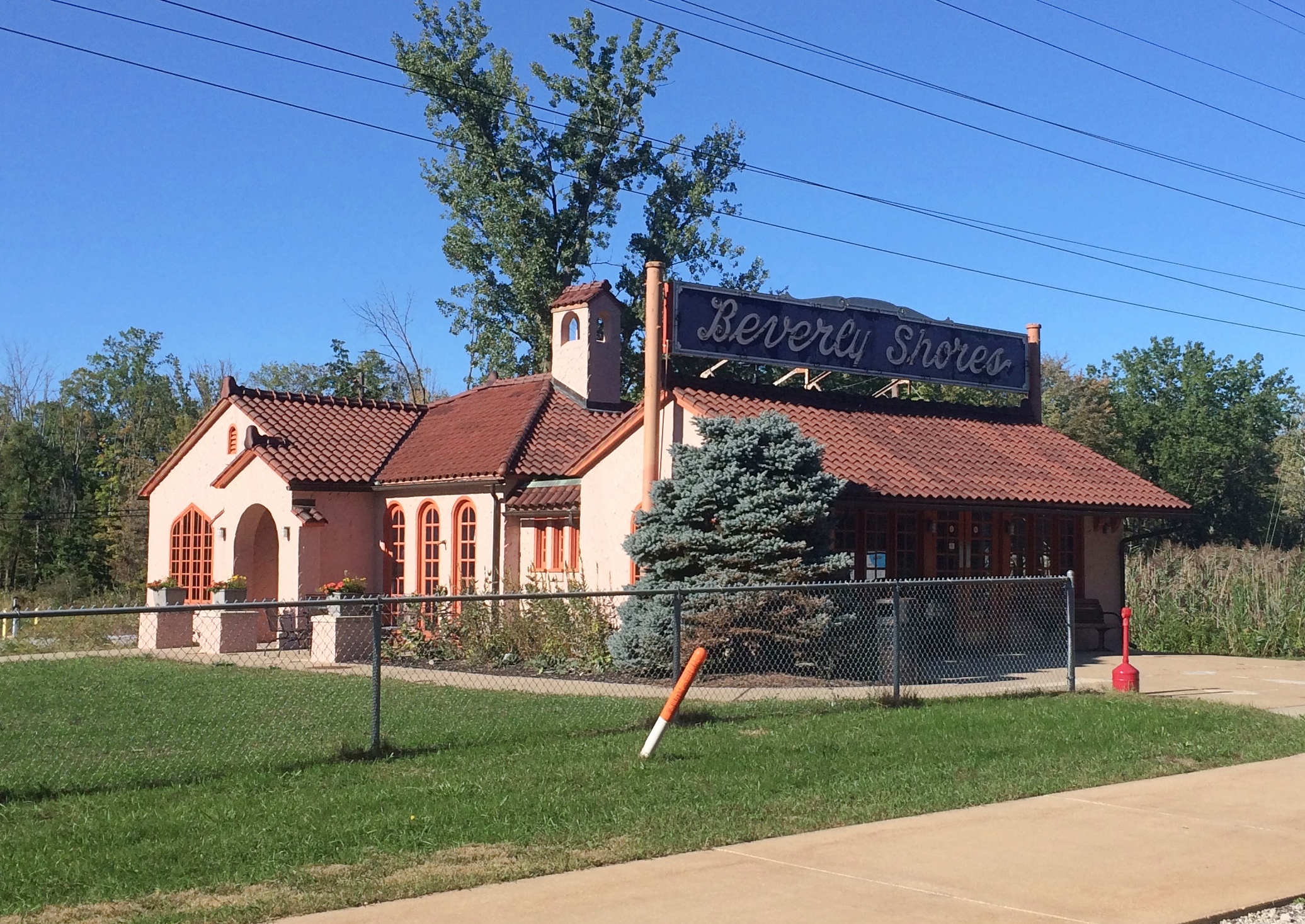


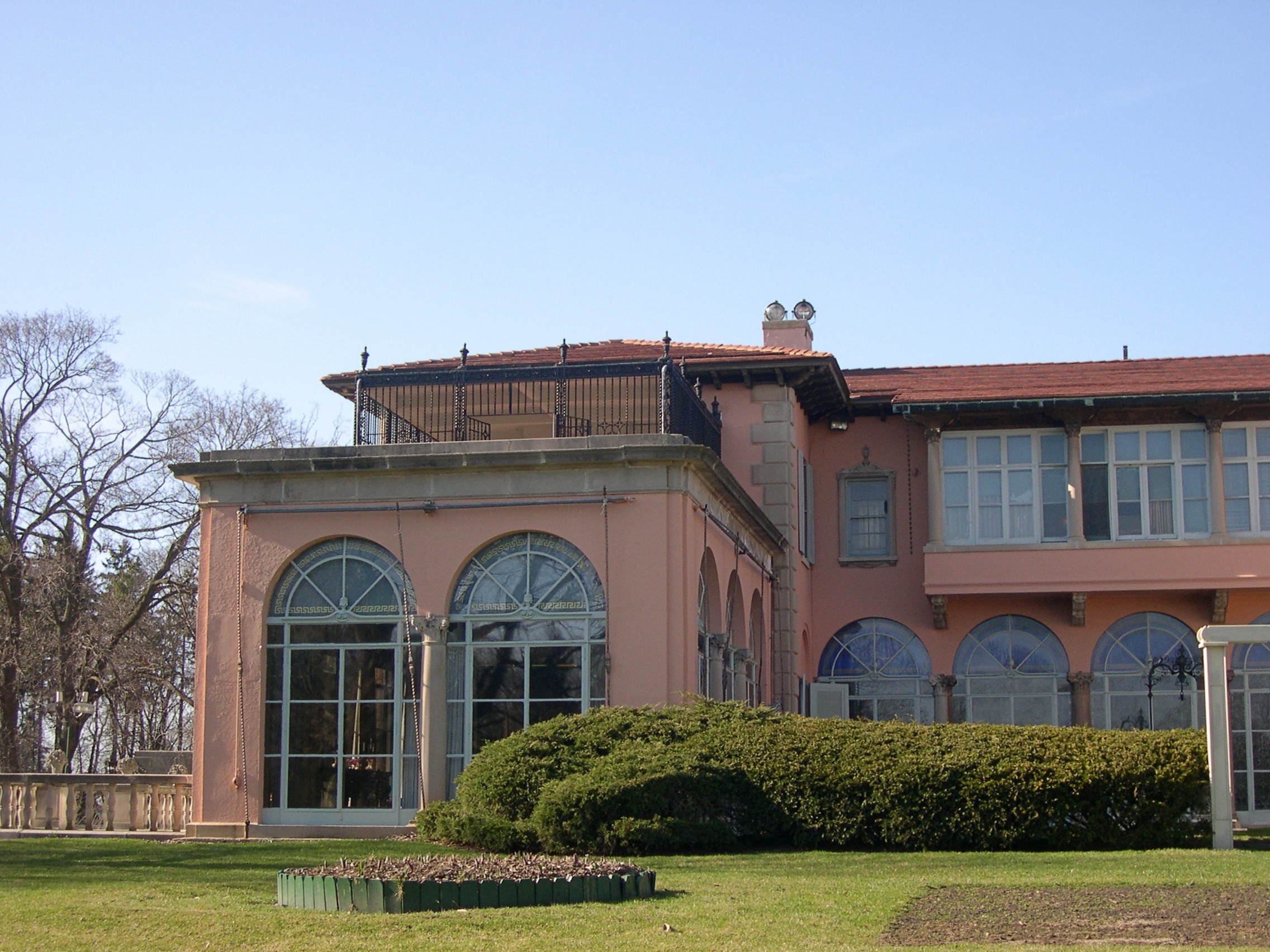

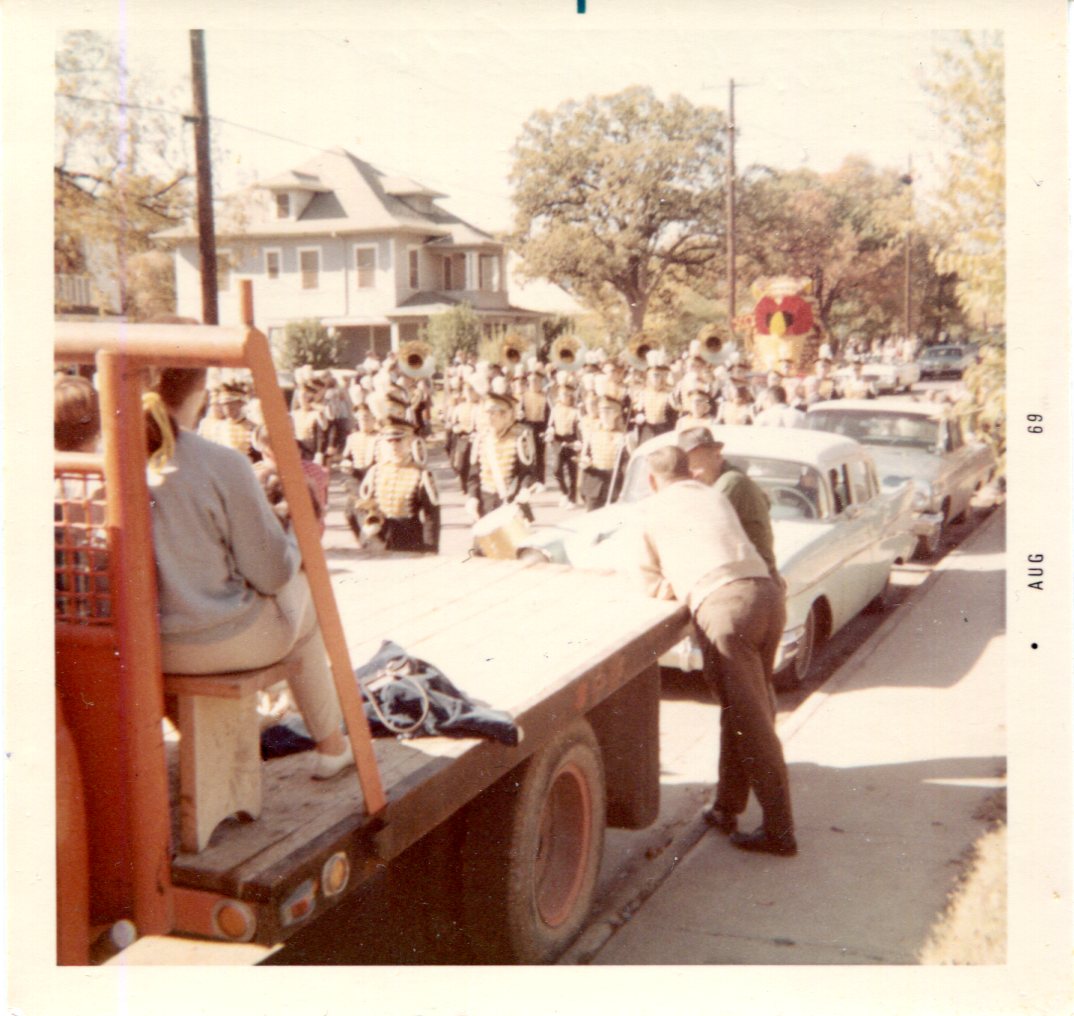
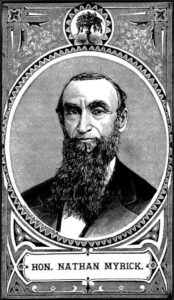
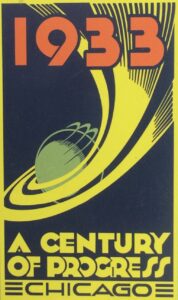

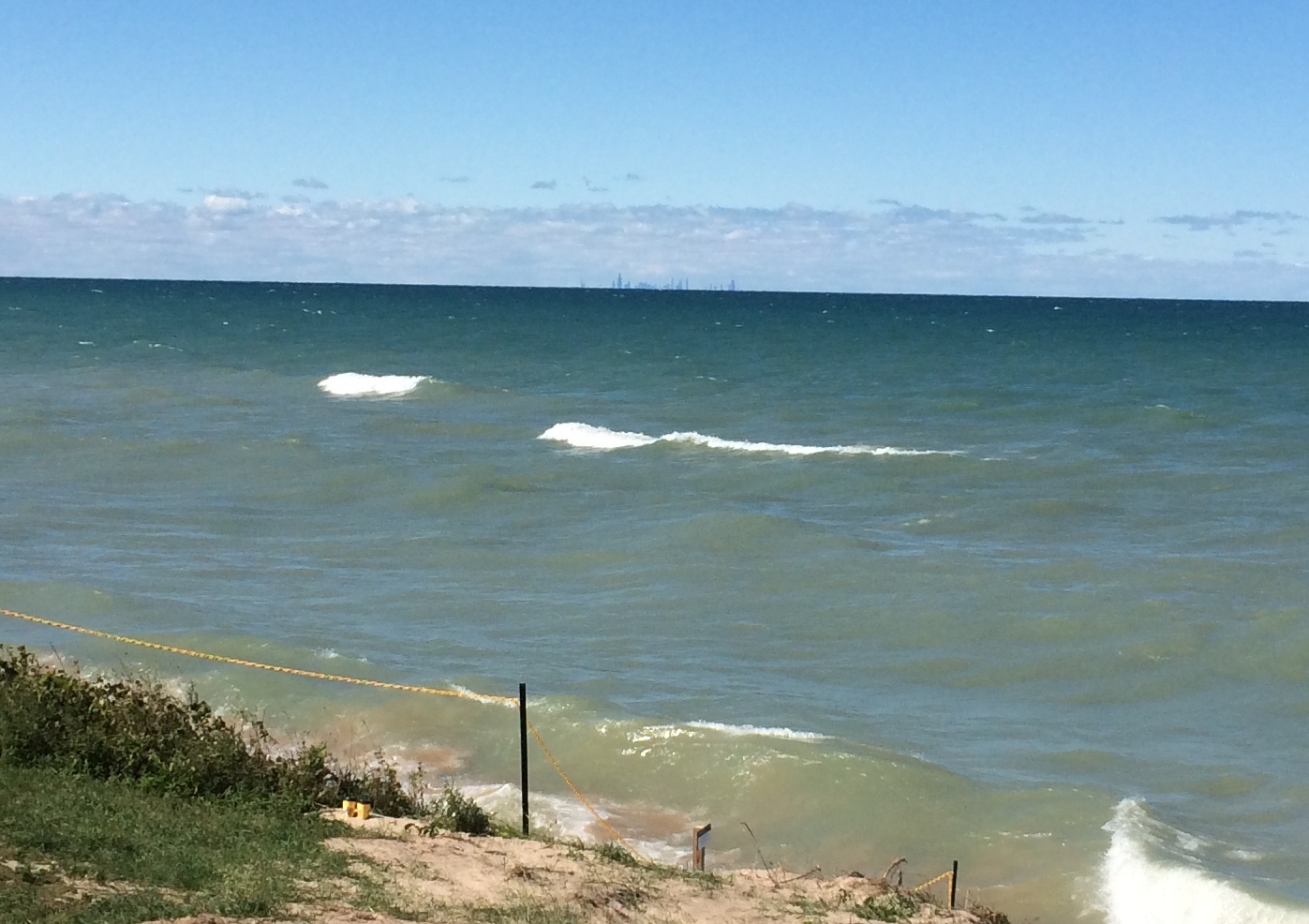
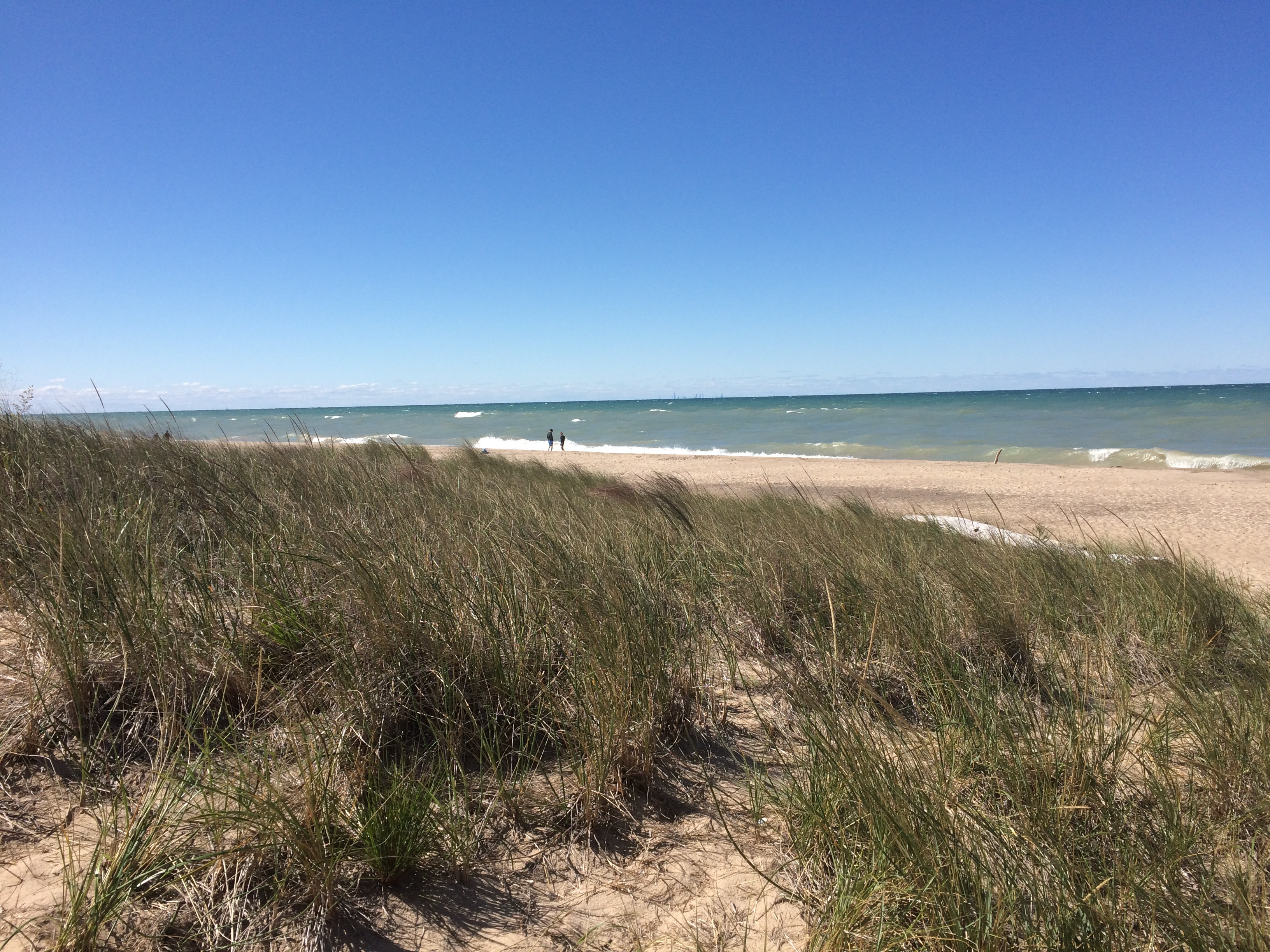
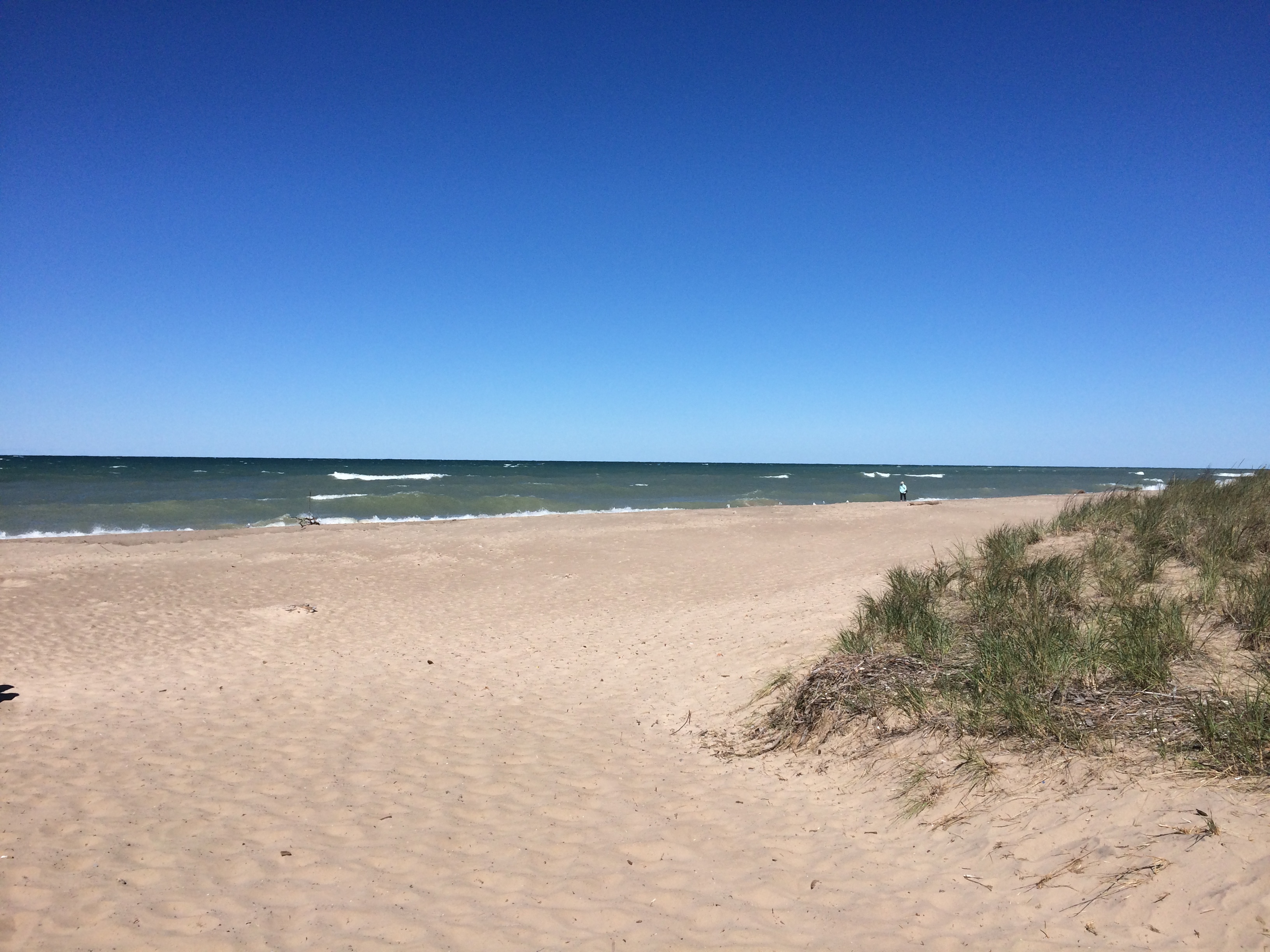
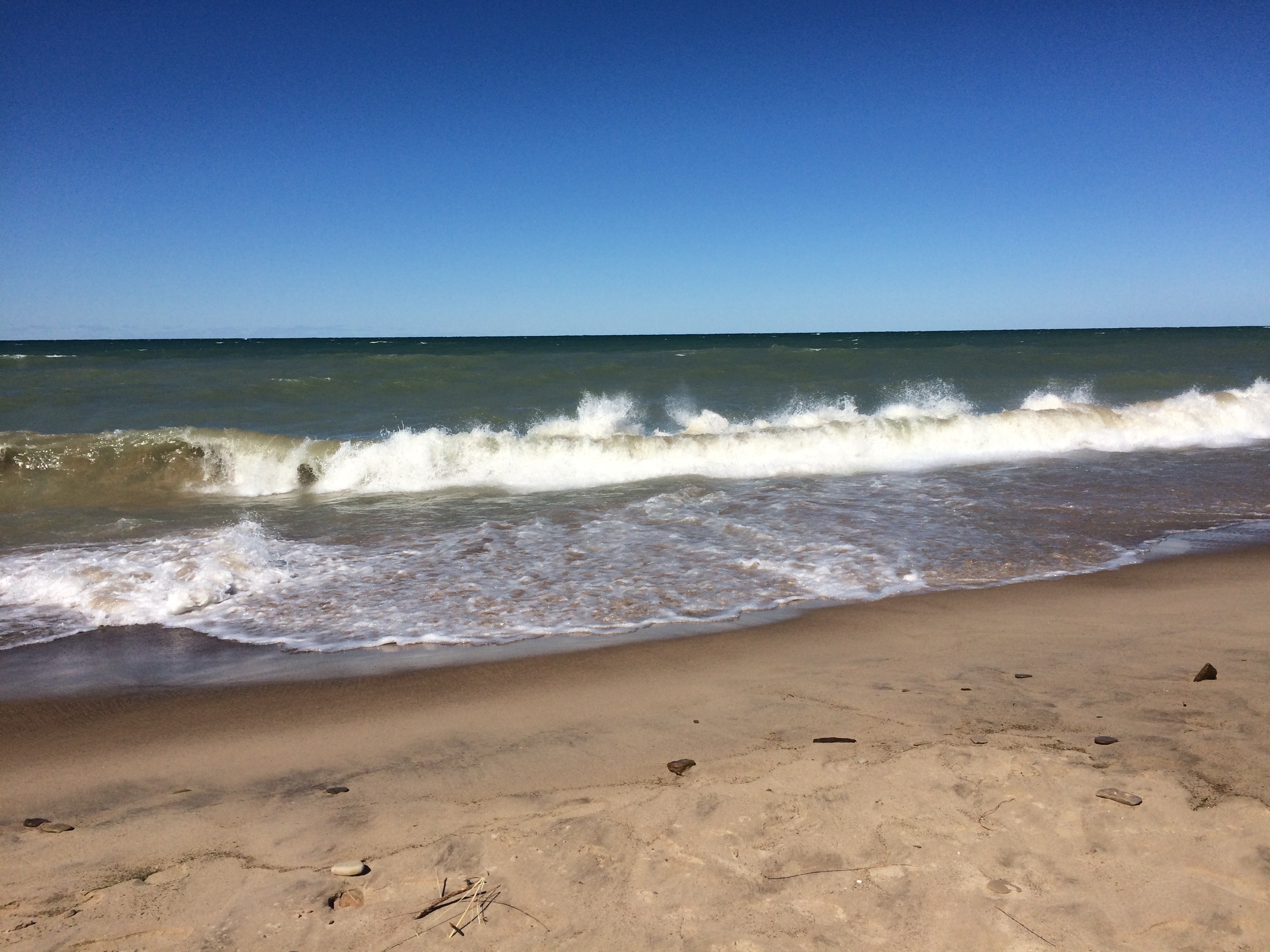
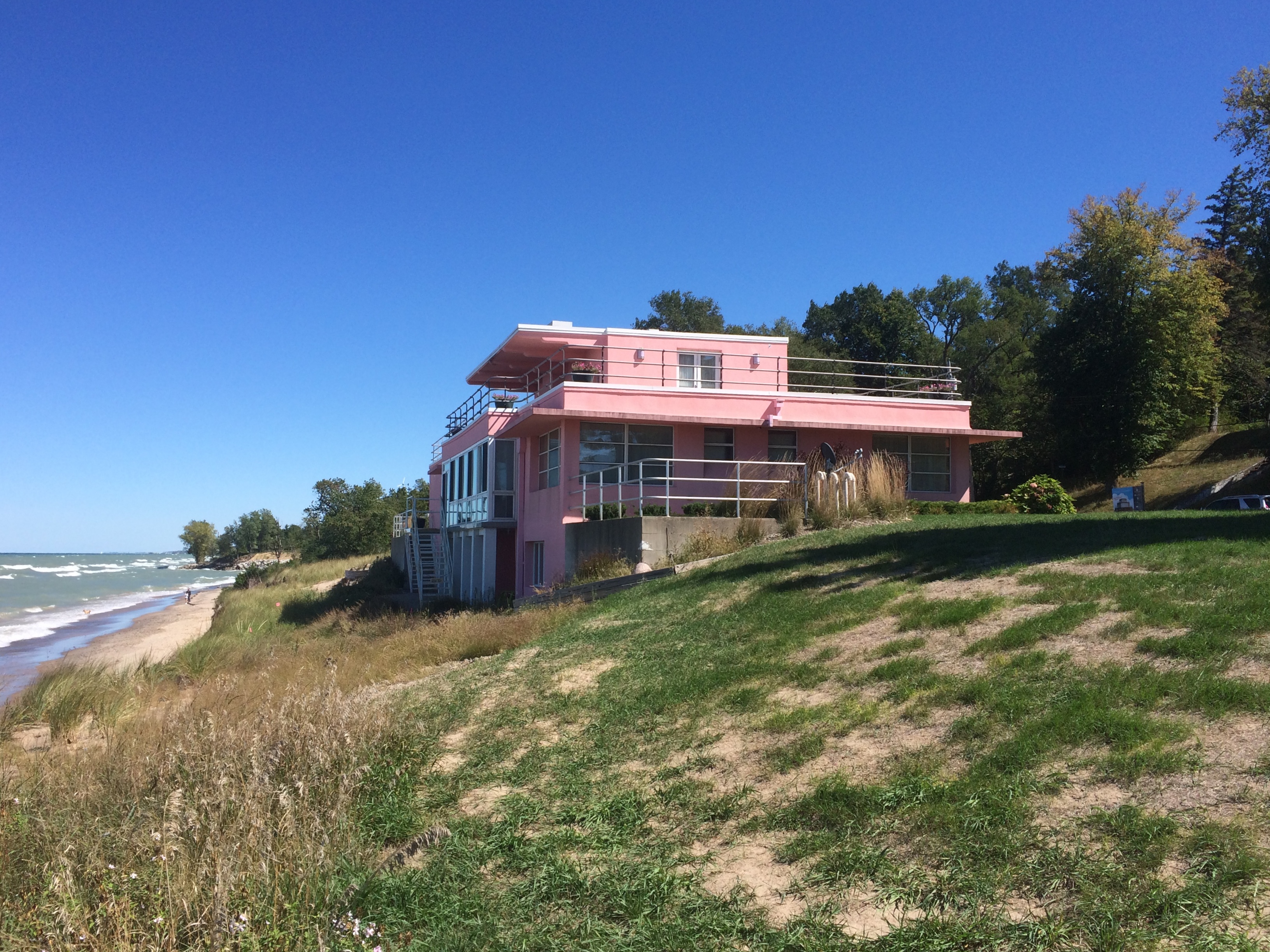

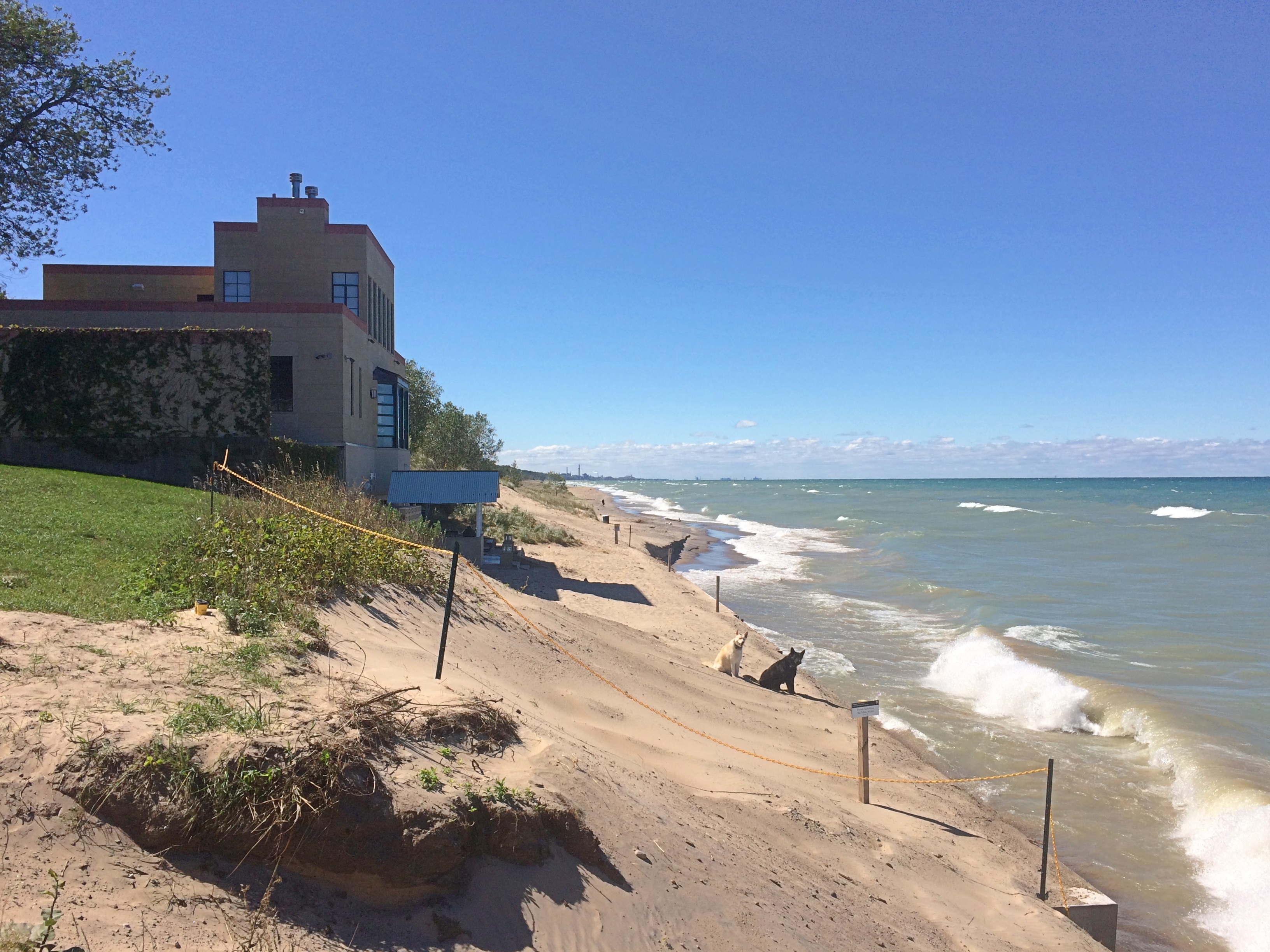
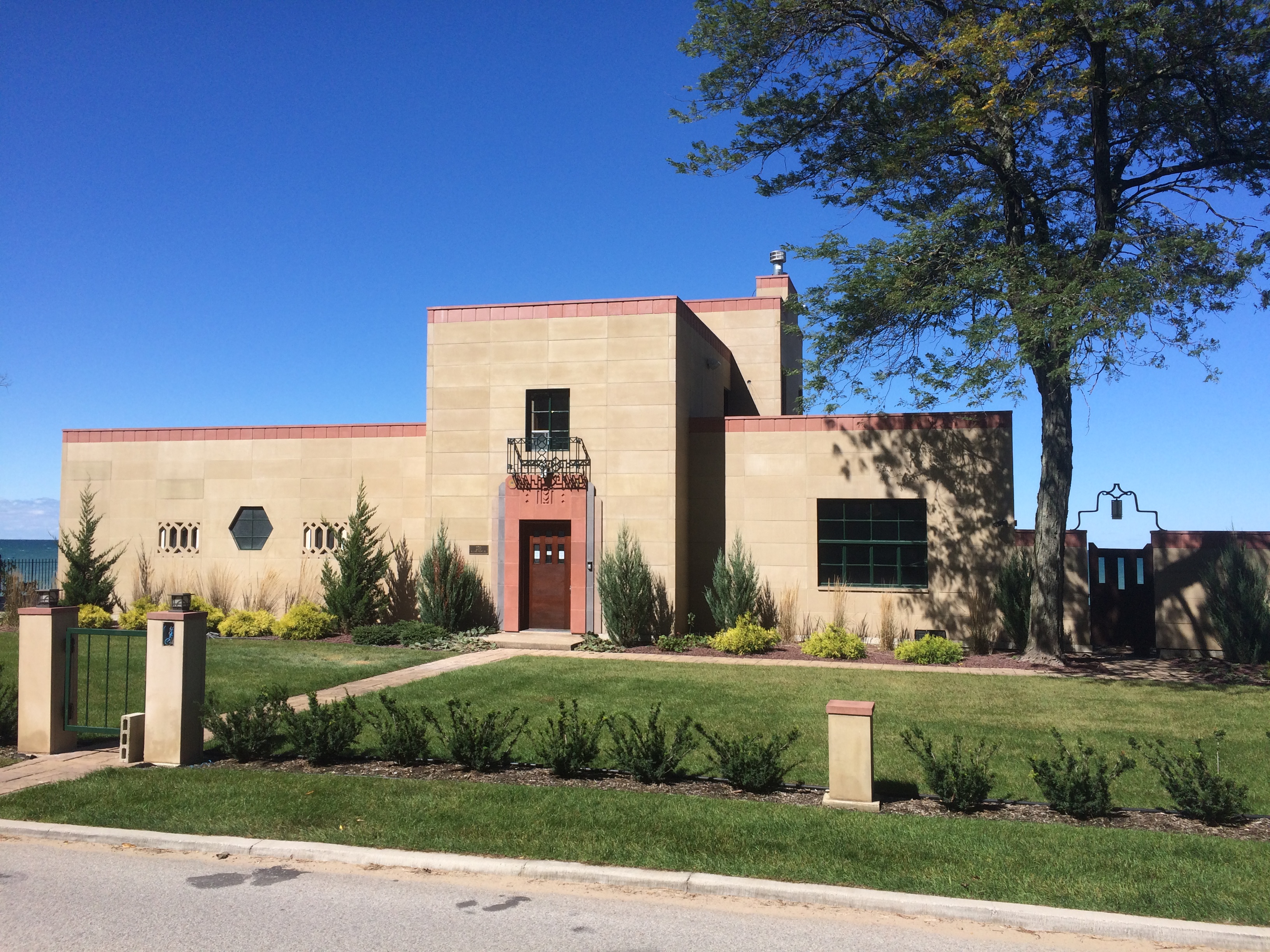
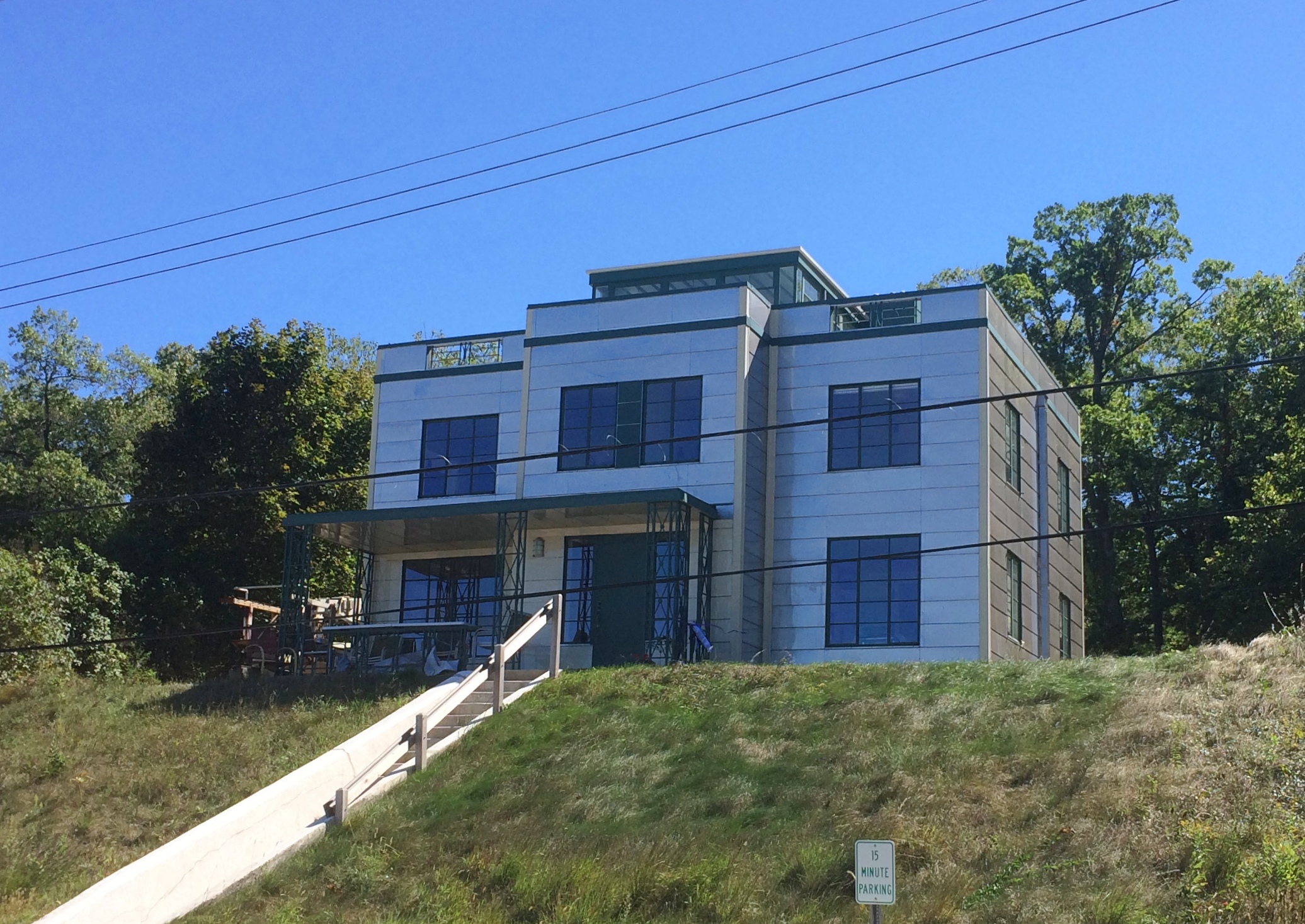
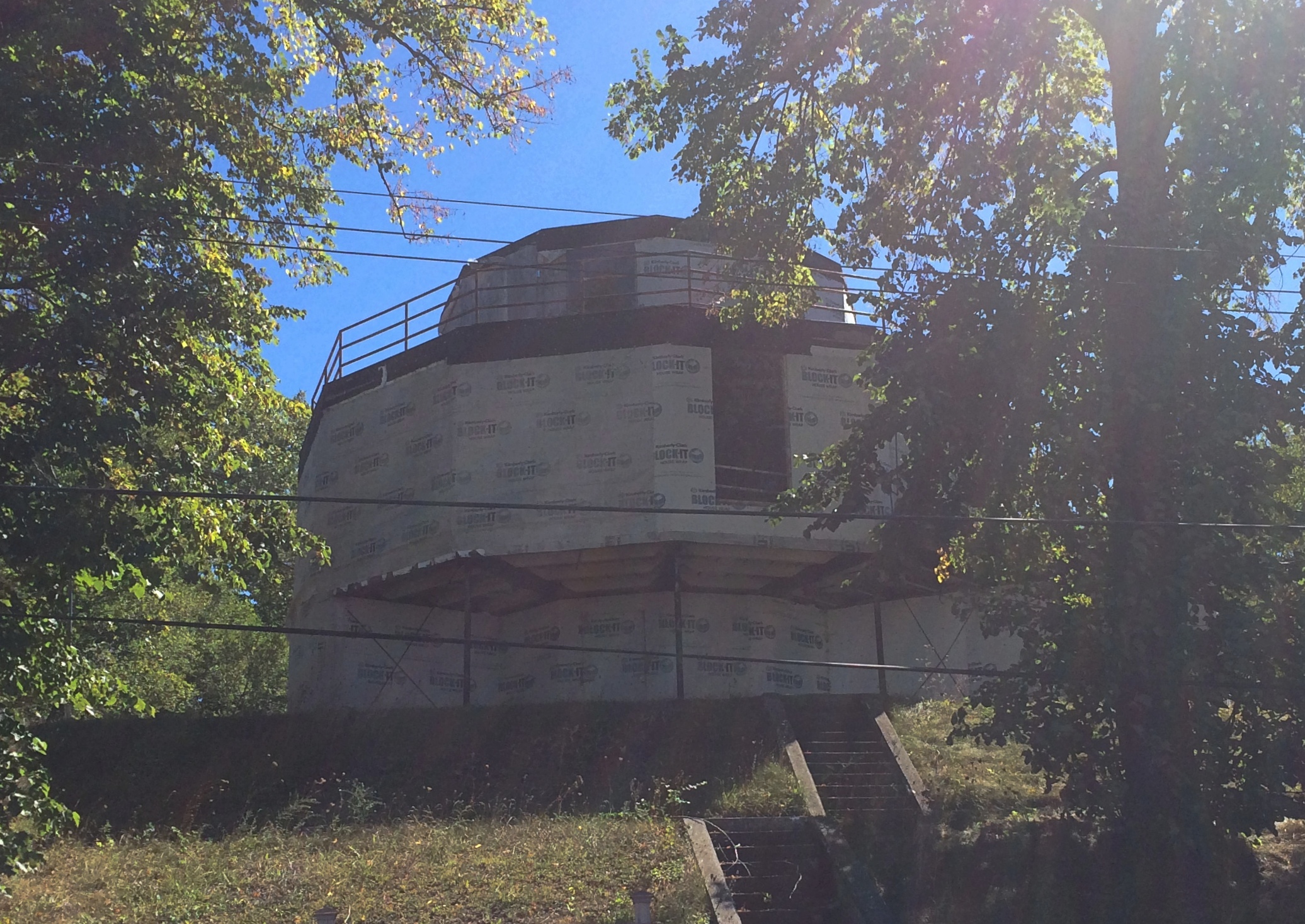

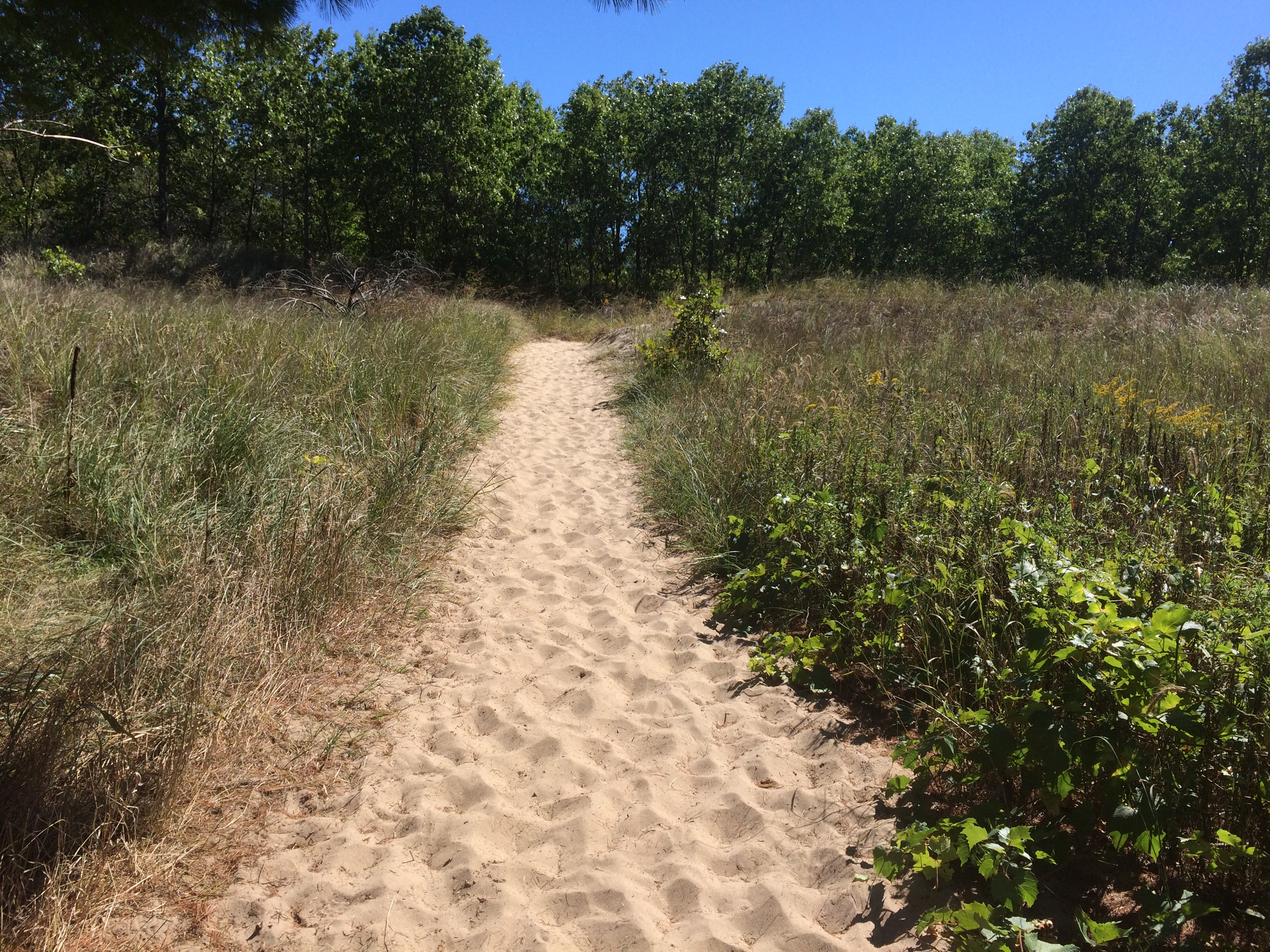

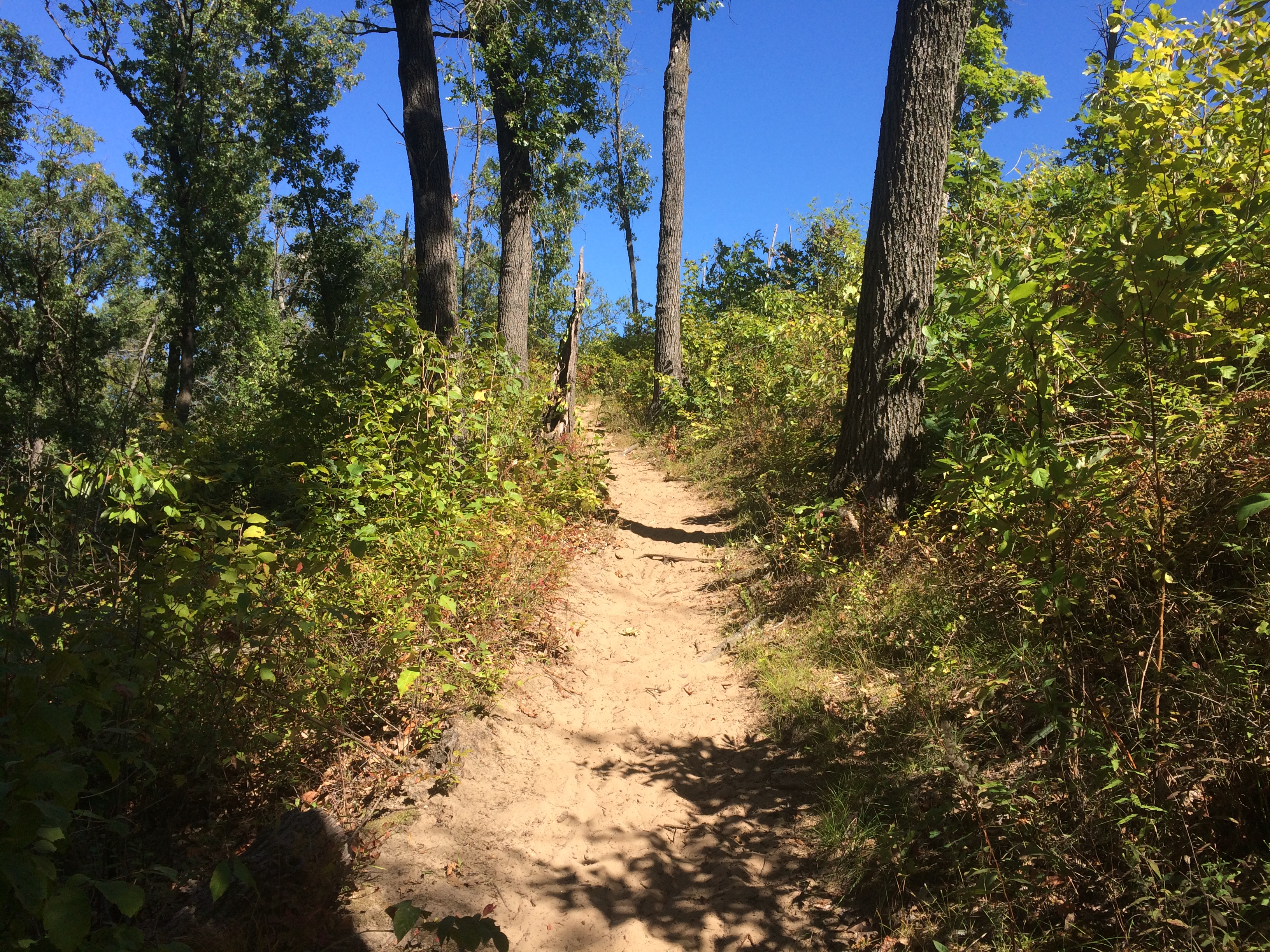
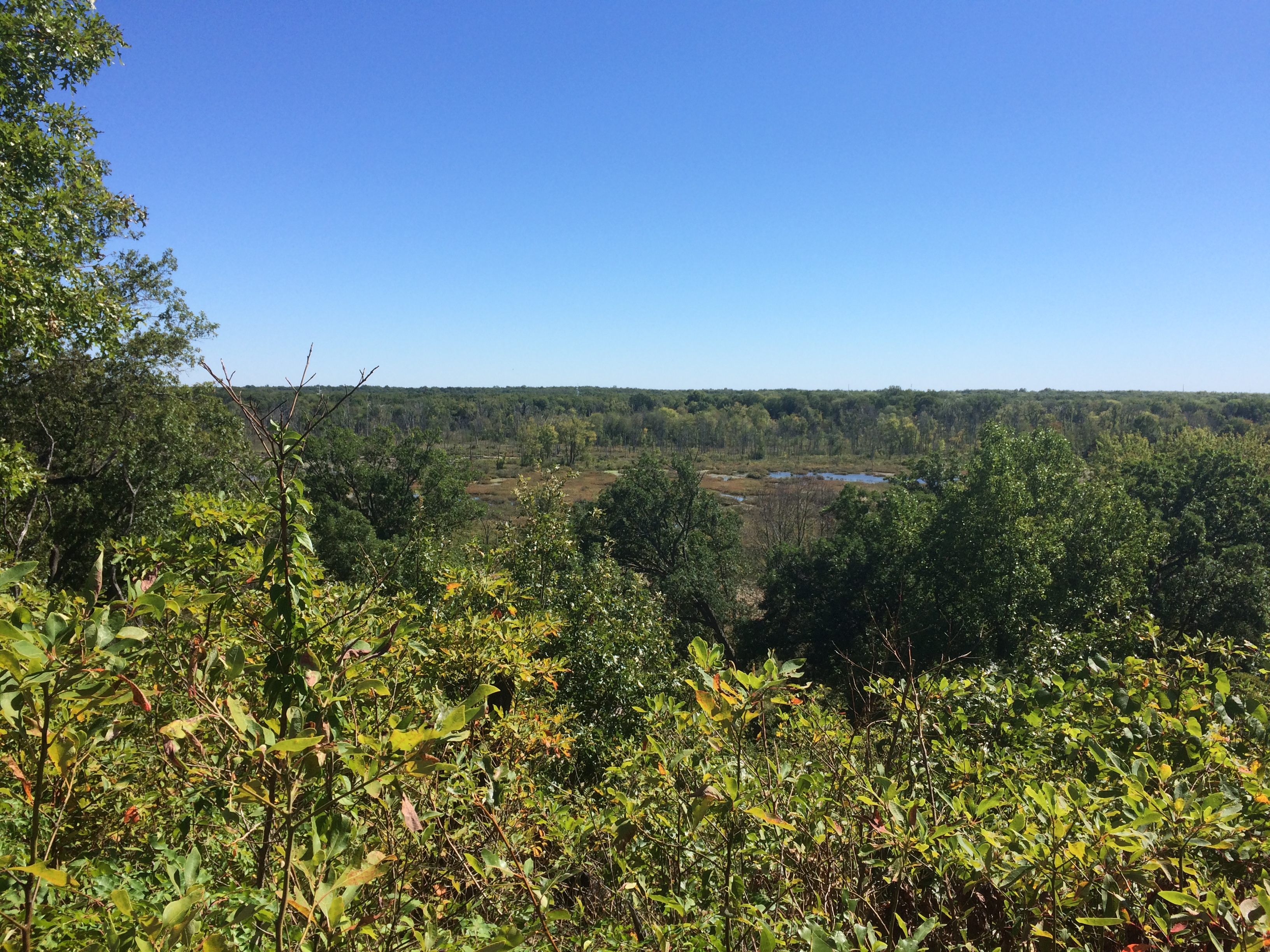
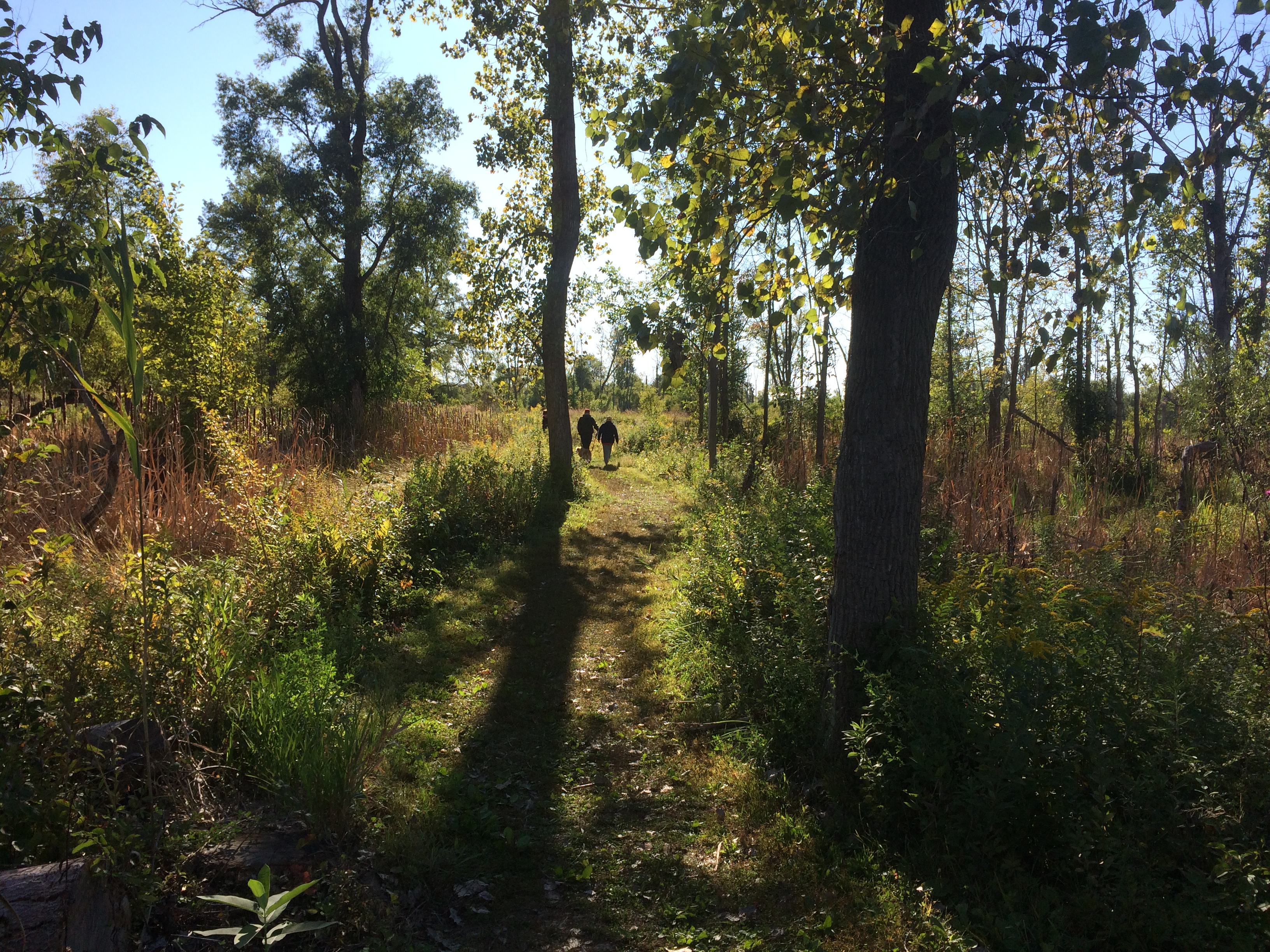
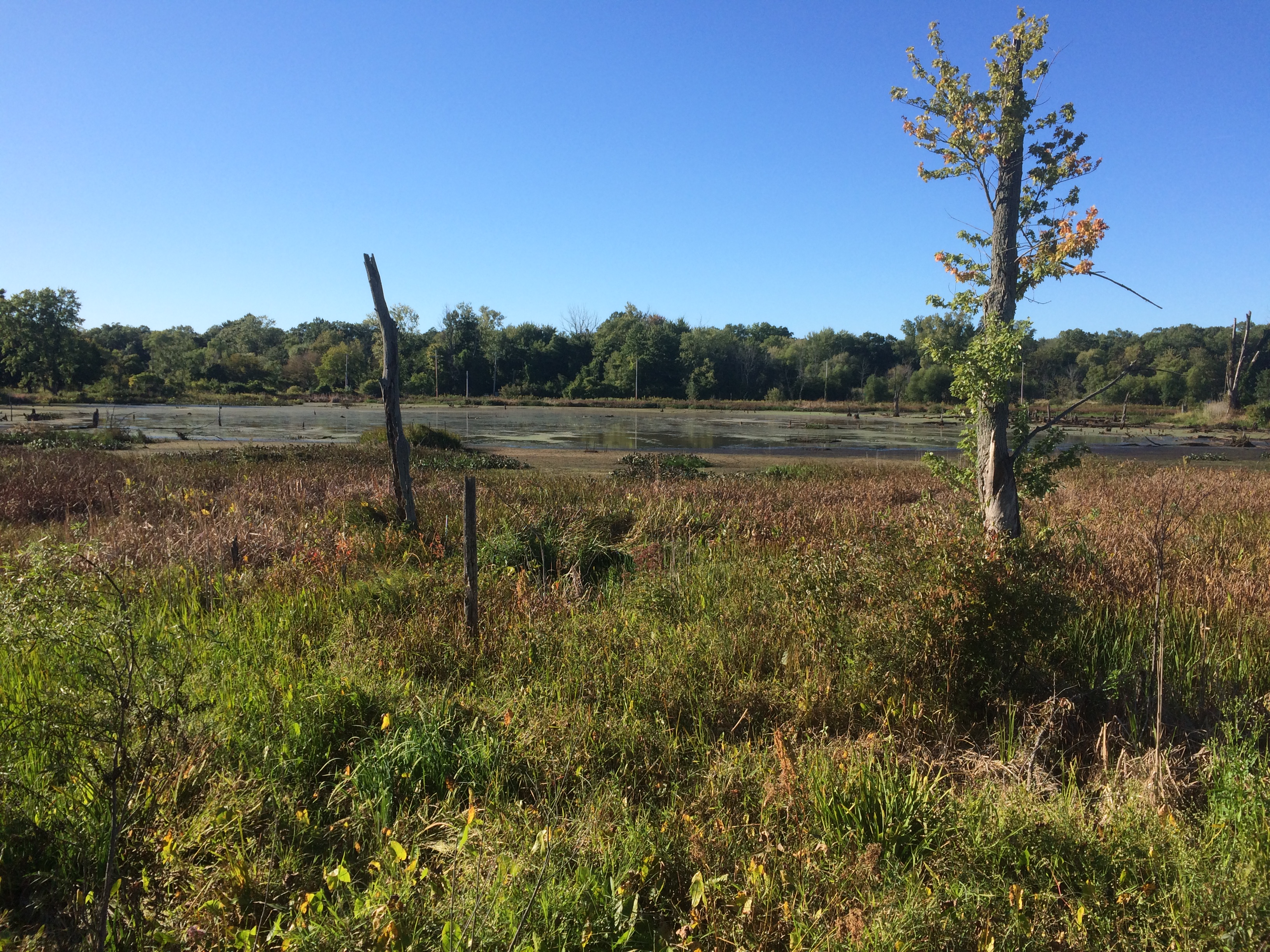



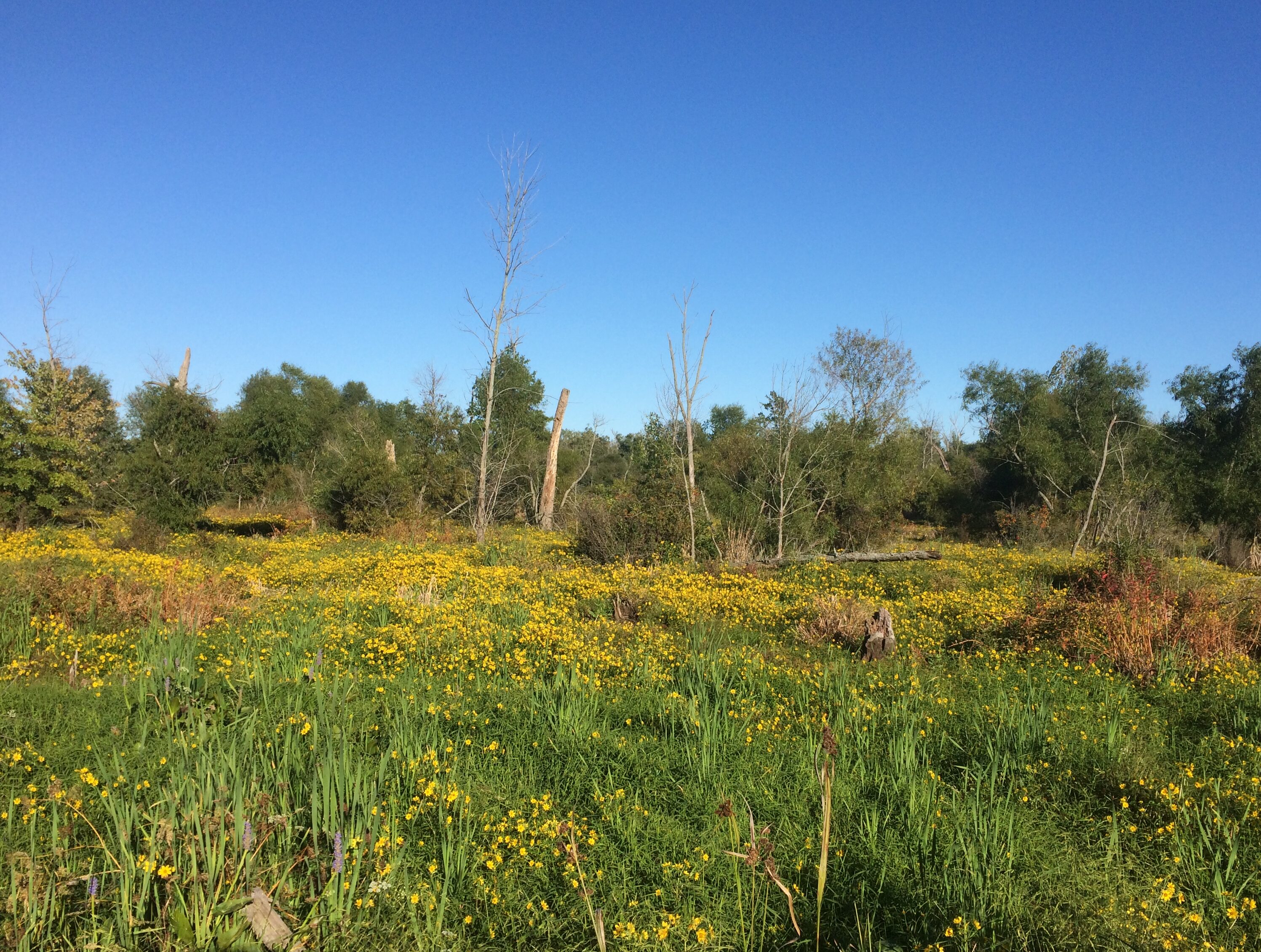 Leisure to stroll among the short-time green?
Leisure to stroll among the short-time green?
